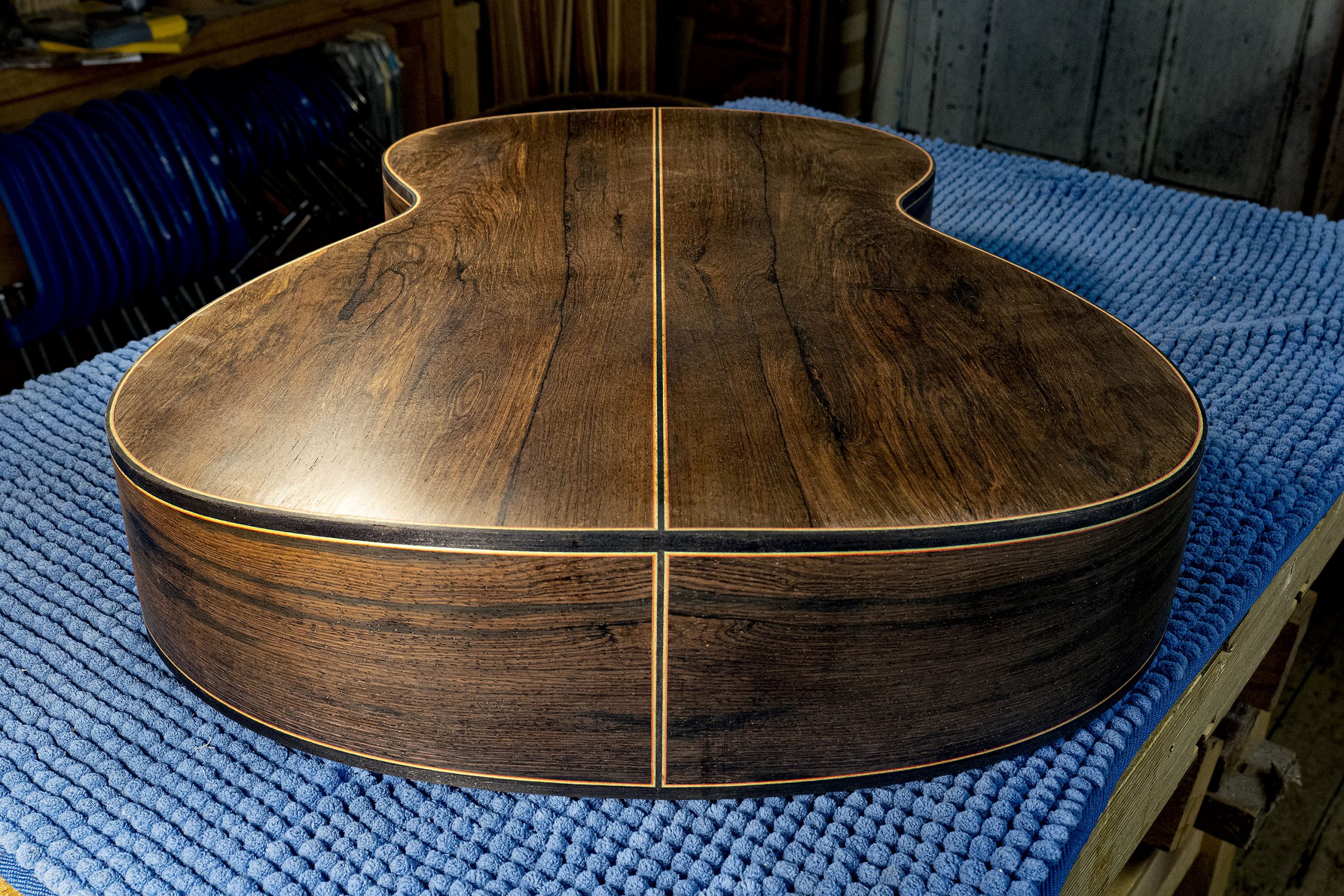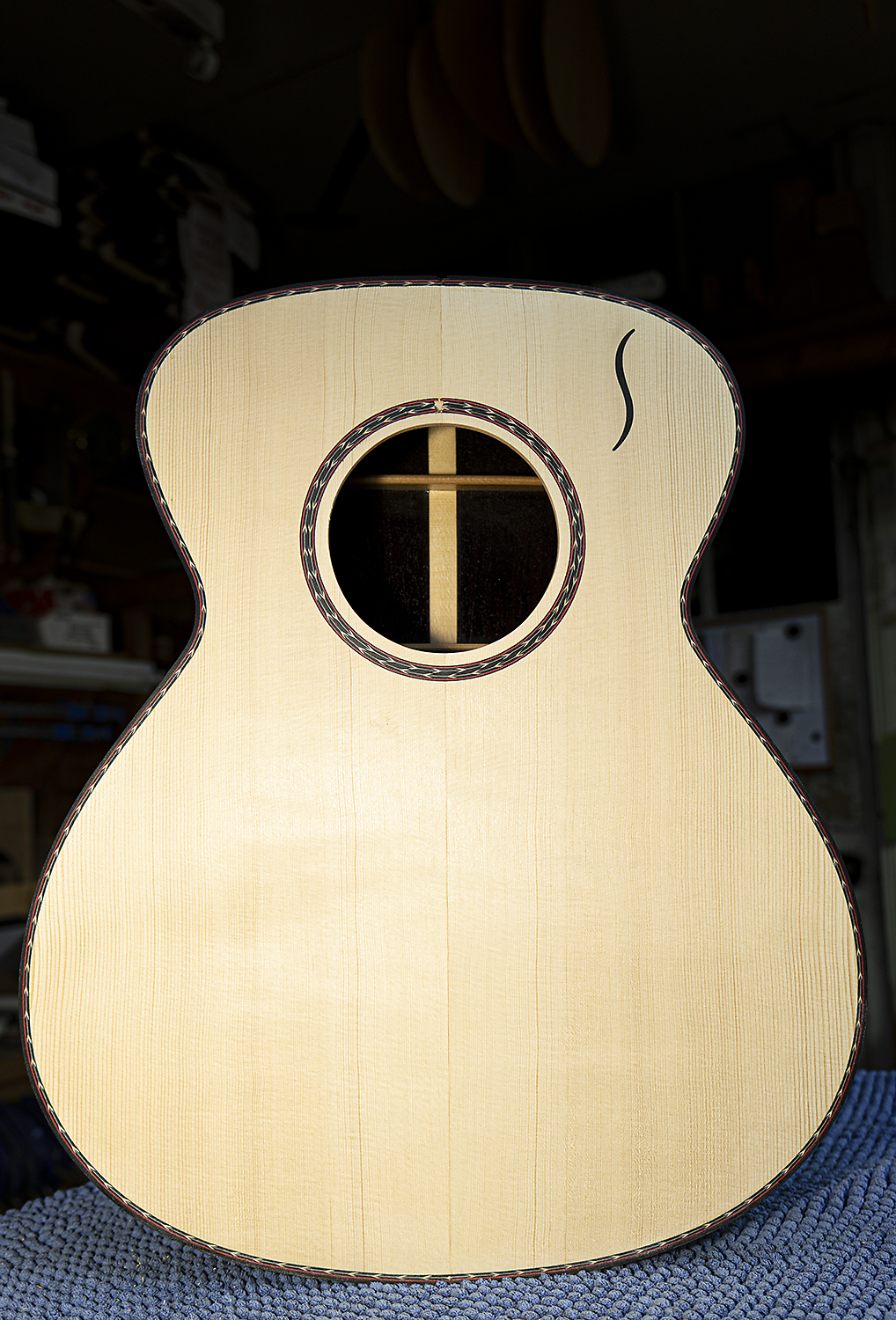New World D part 2
A little progress
Before starting this 12 fret New World D, I planned on building an MS model and had cut the rosette slot and fitted a double arrow-head rosette.
When I decided that I would instead build a New World D, I was still able to use this soundboard, but the rosette and soundhole would have been in the wrong place for a 12 fret. There was no possibility of moving the rosette and anyway, no need to, because the soundboard was big enough for me to re-position the guitar shape.
In the photo of the rosette, you can see some of the original MS outline, and how different the soundhole position would have been.
The difference would have been greater except that the 12 fret has one fret fewer between the neck end of the body and the soundhole. The bridge will of course be closer to the tail by the distance between the 12th and 14th frets, and the bracing pattern has been modified accordingly.
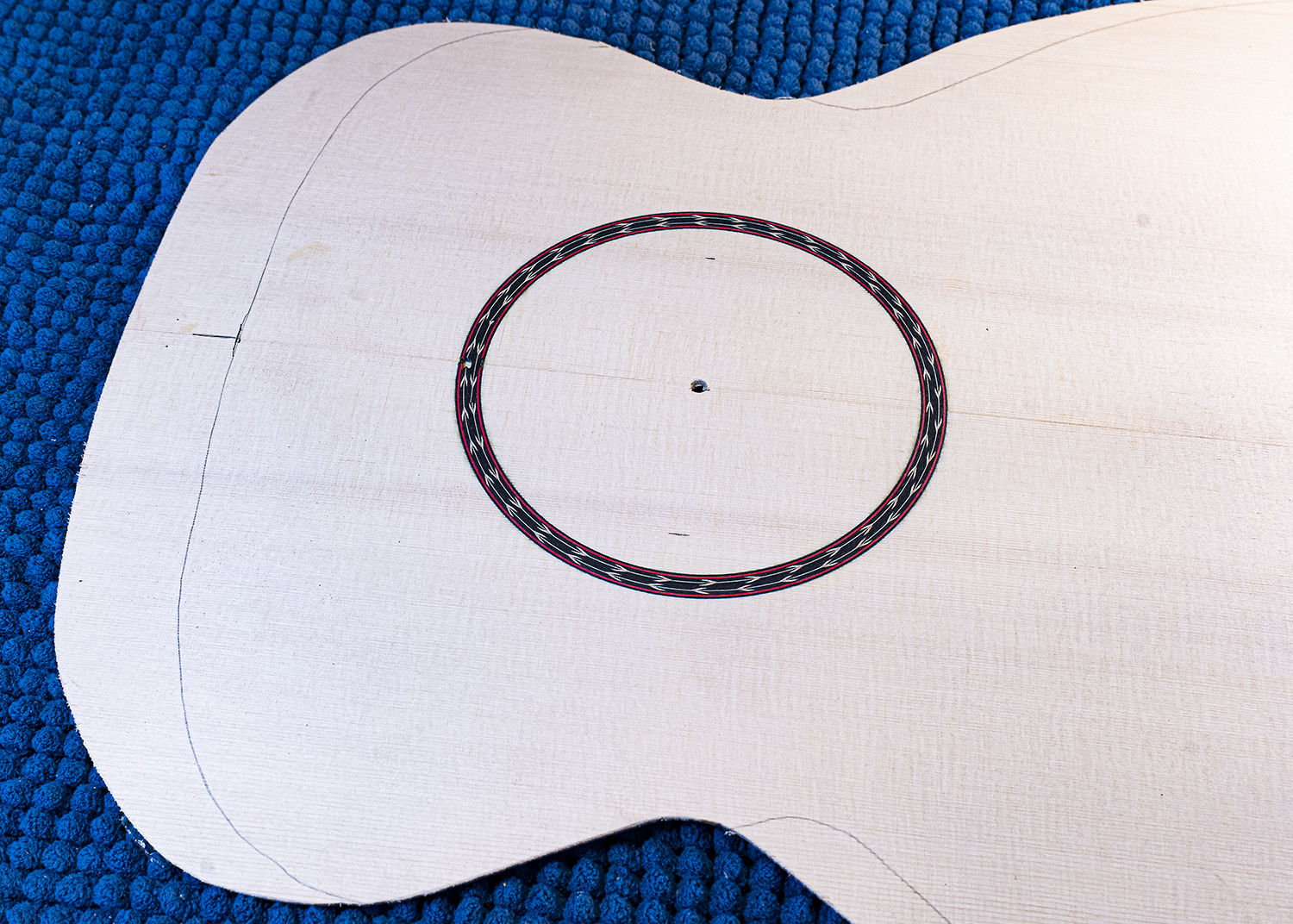
.
Above, the centre reinforcement has been cut away to receive the back braces. You can see from the guitar outline, this back is not quite as wide as the NW body. However, the binding and purfling will add enough width that it will be just wide enough. Otherwise I would have had to add a narrow tapered centre panel to make a three piece back.
Right, the braces have been shaped (all four to the same curve) and glued in place. Another example of the usefulness of the go-bar jig, this was a much more complicated operation before I had it.


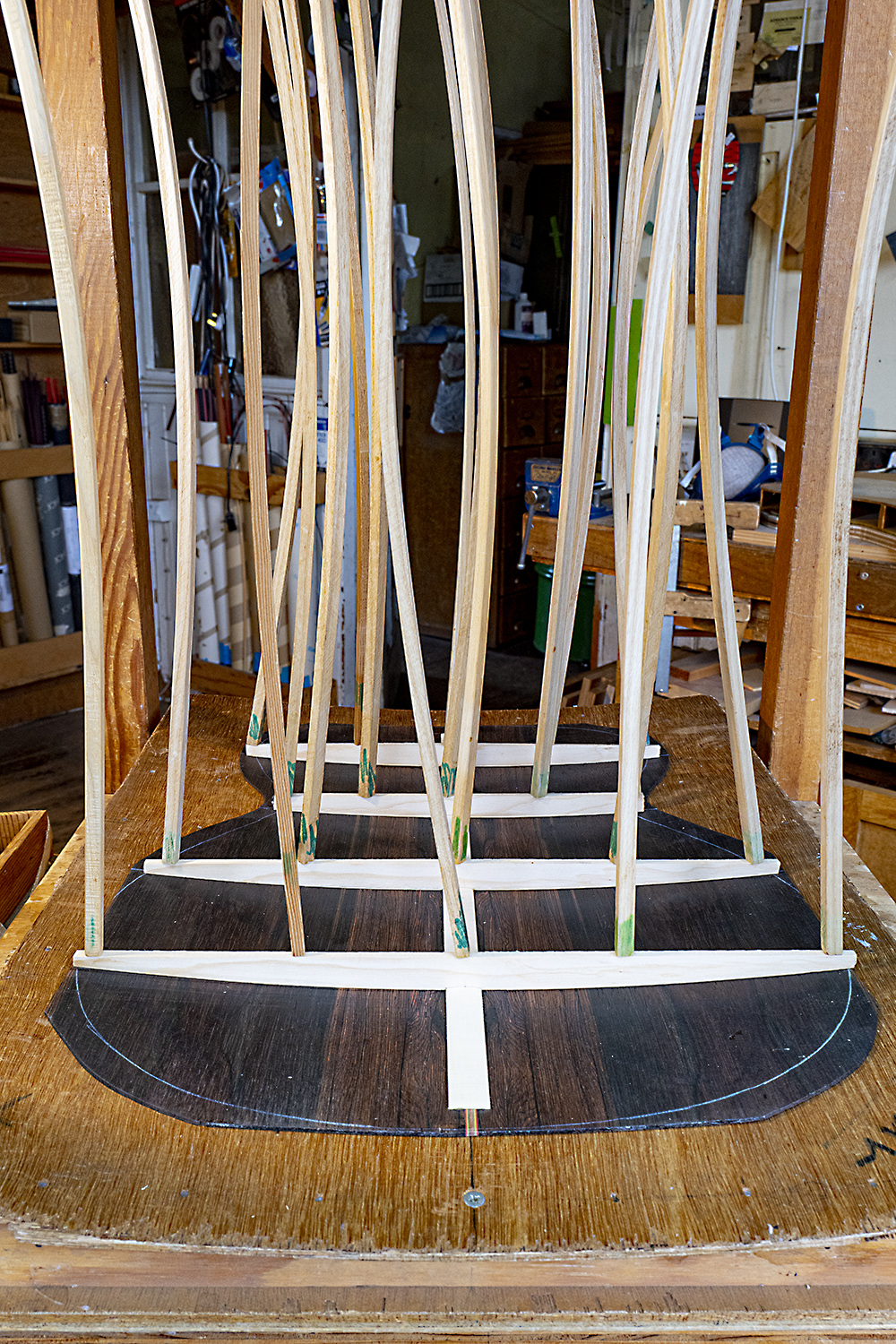
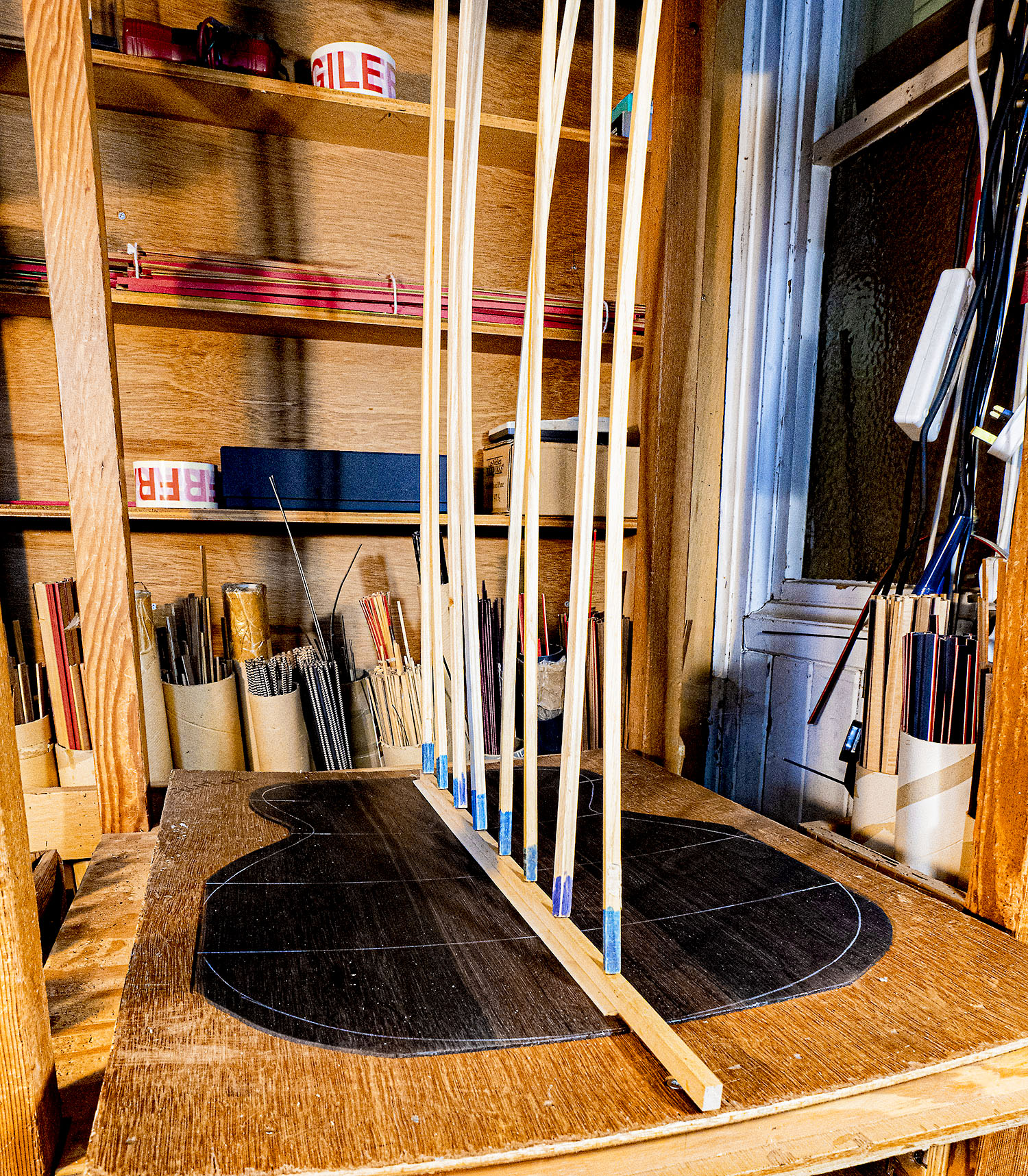
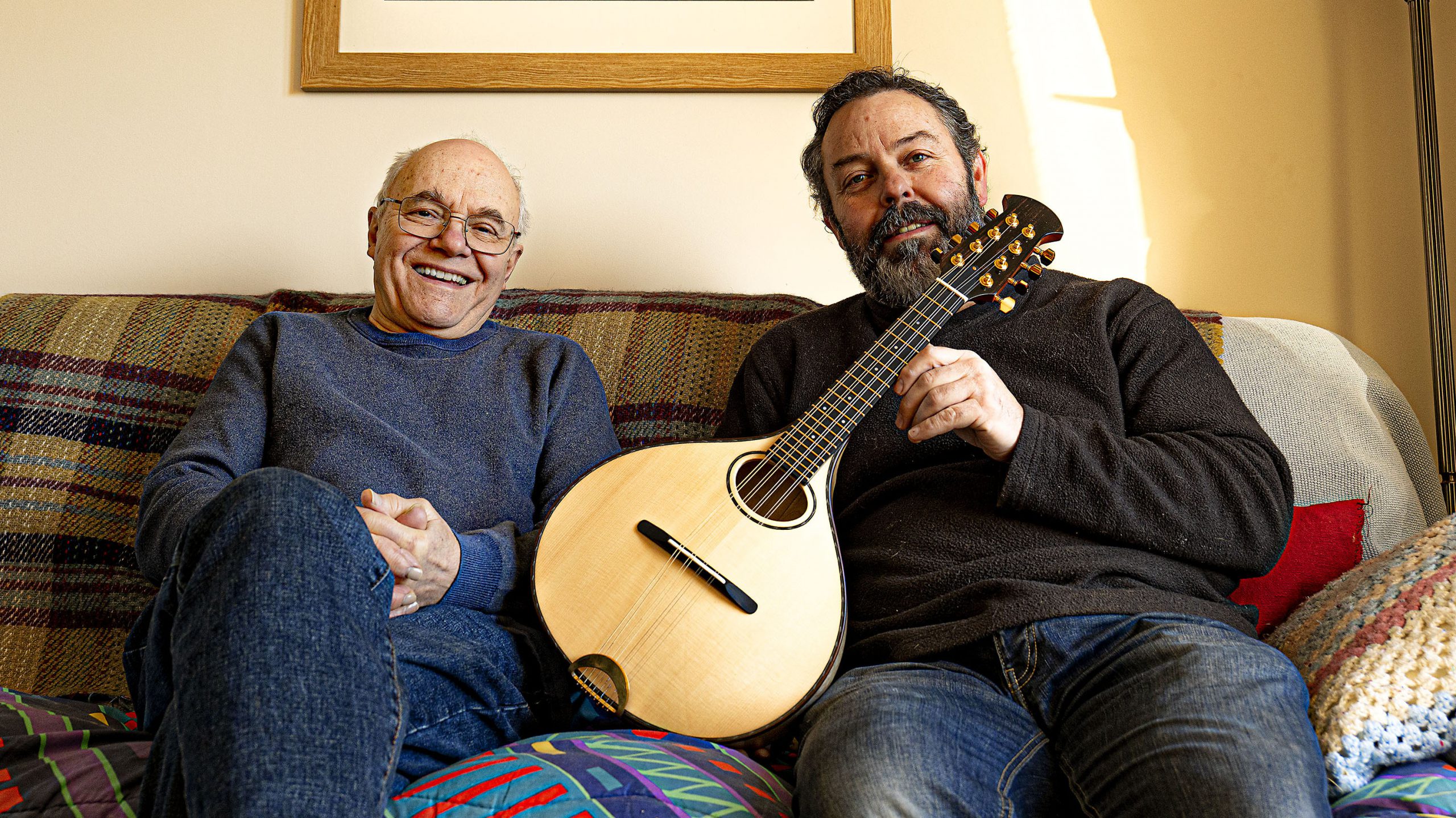 Me, Colin, and the mandolin photo: Janet Fellows
Me, Colin, and the mandolin photo: Janet Fellows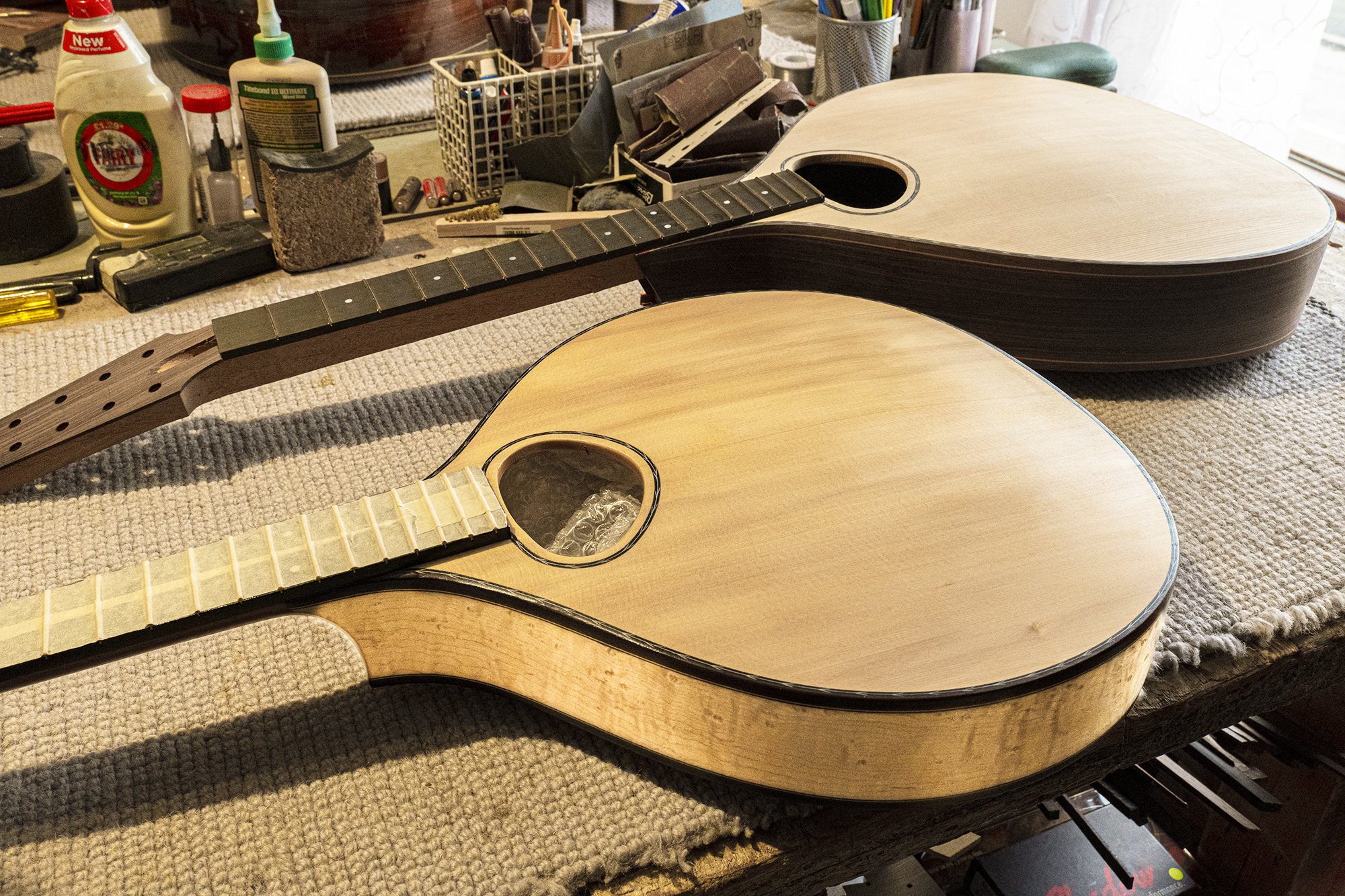
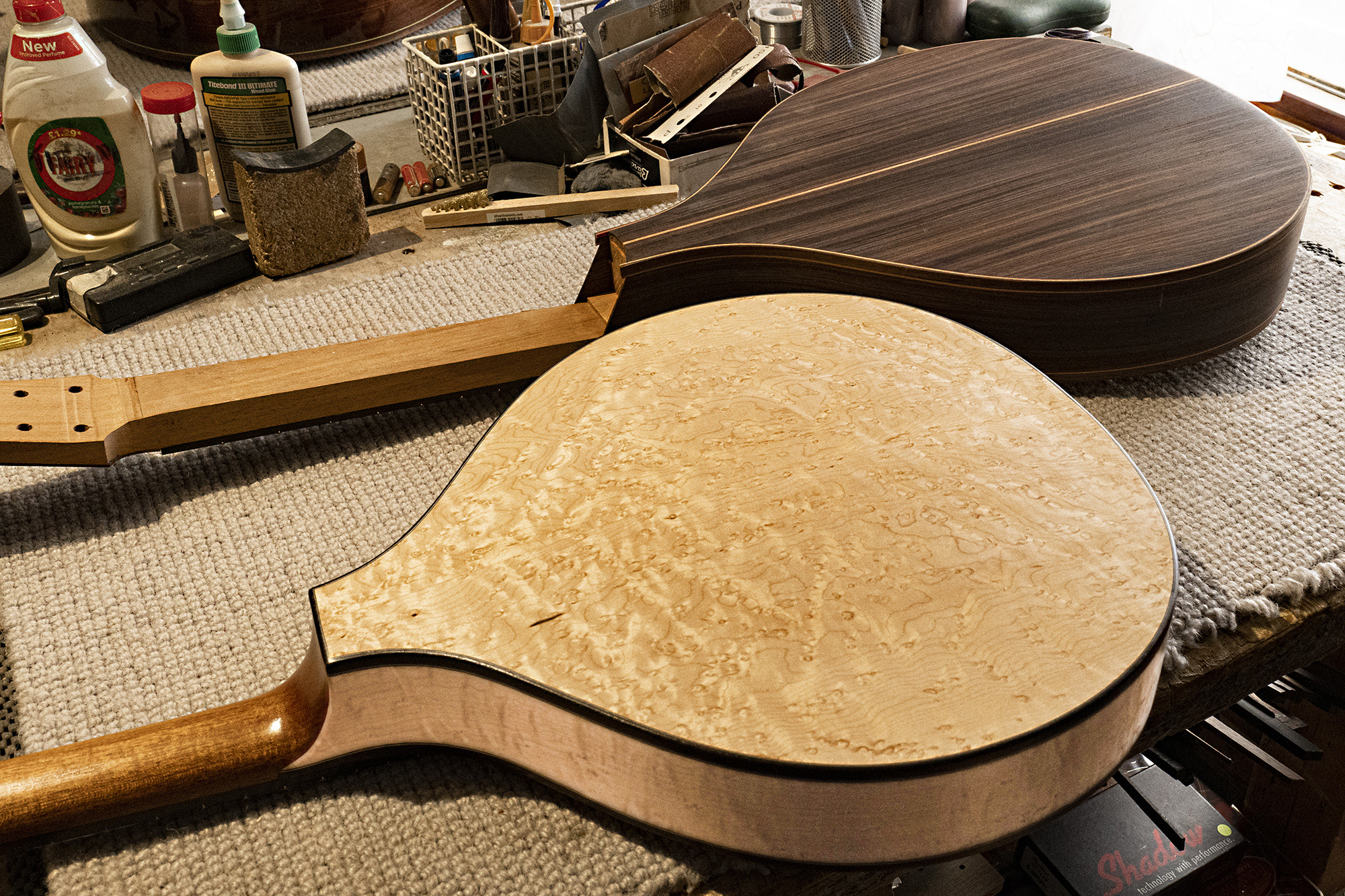
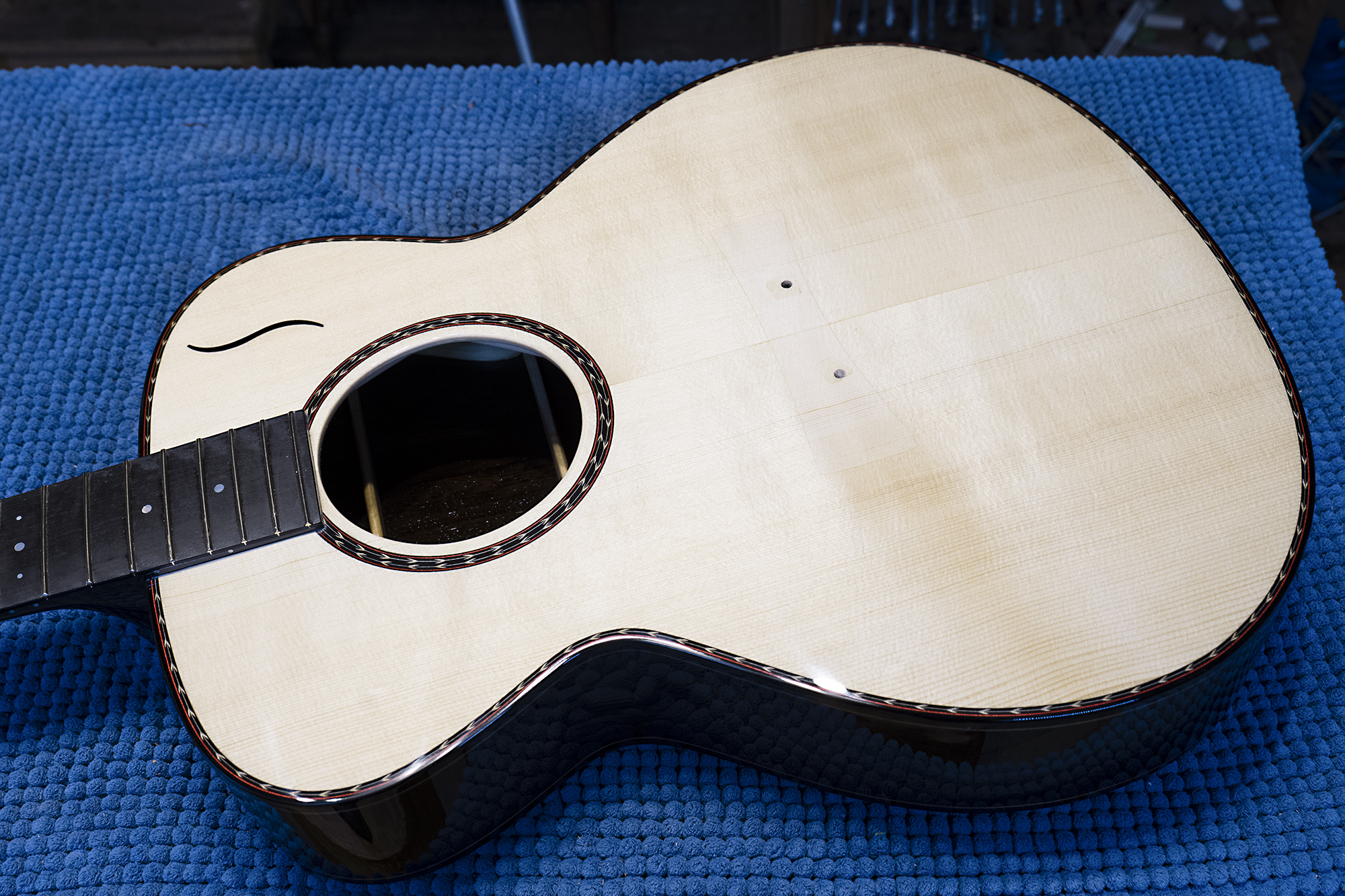
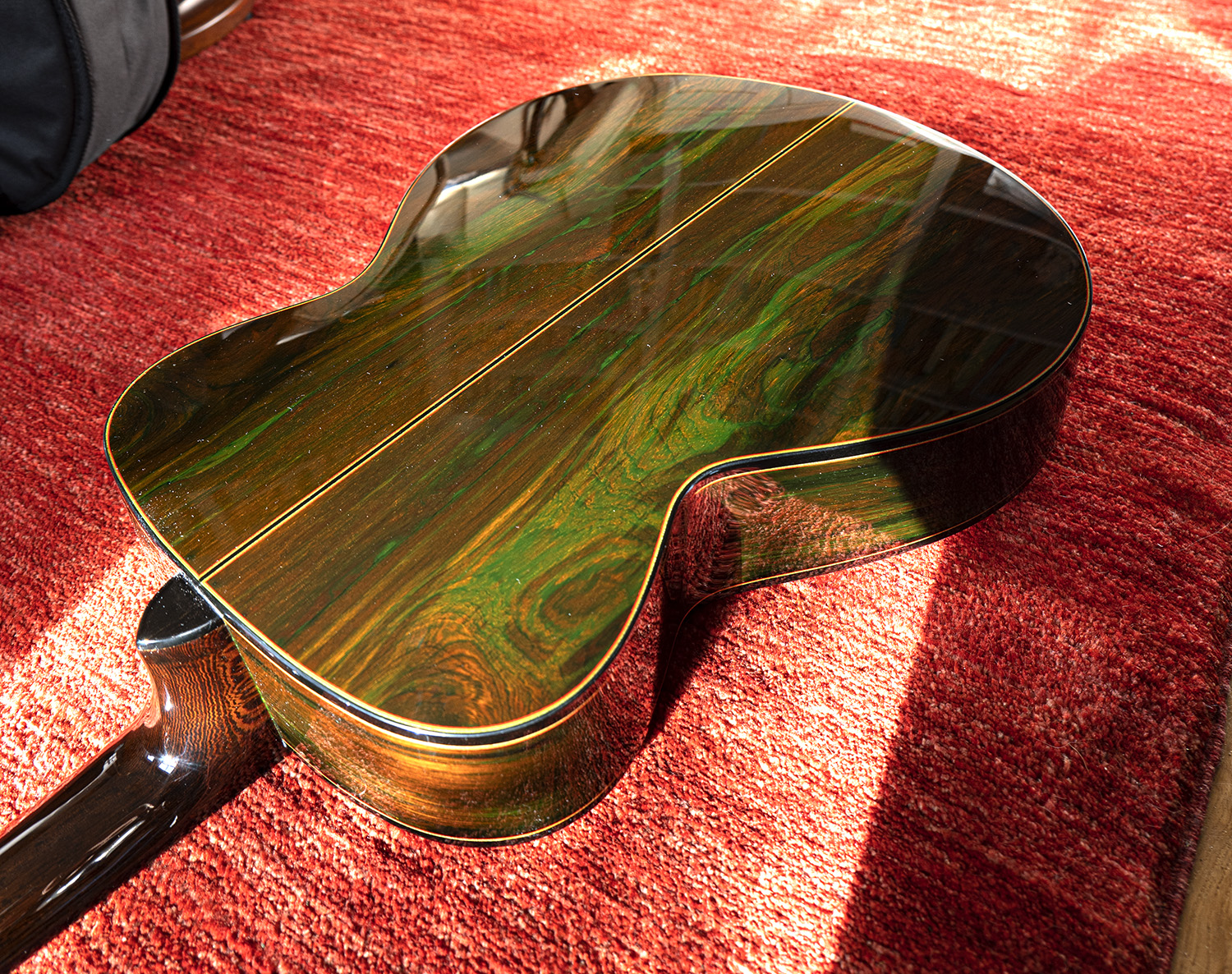

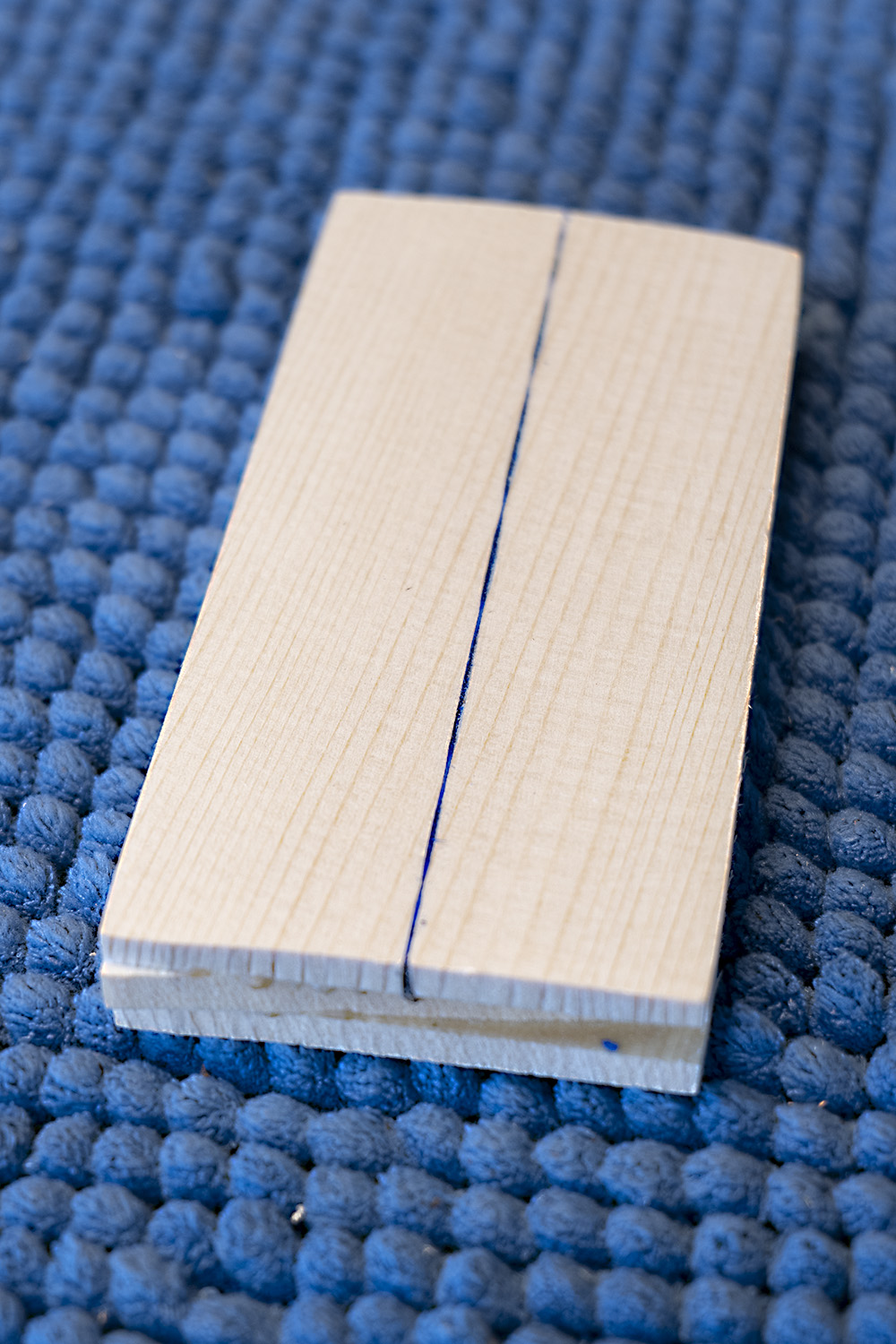

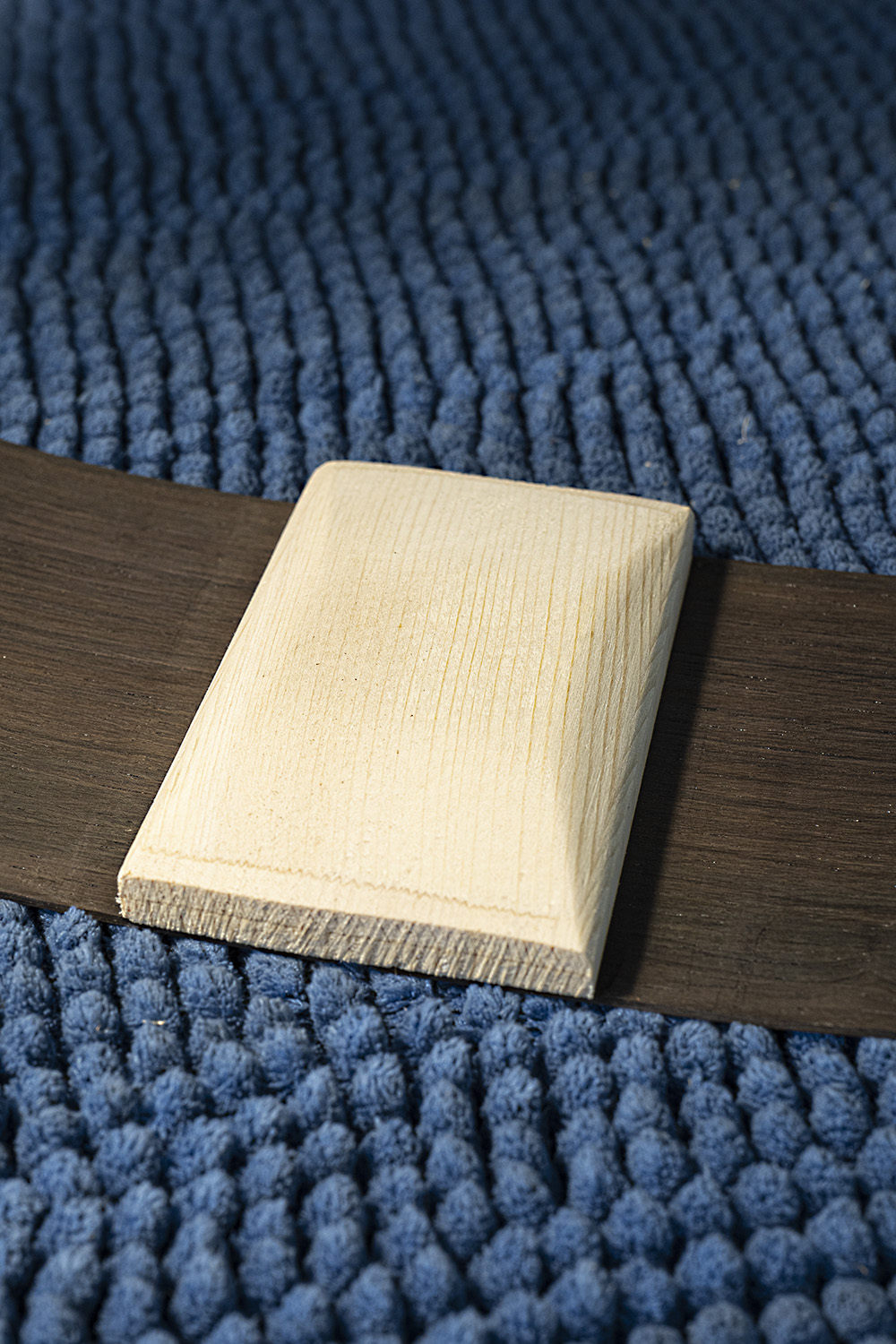
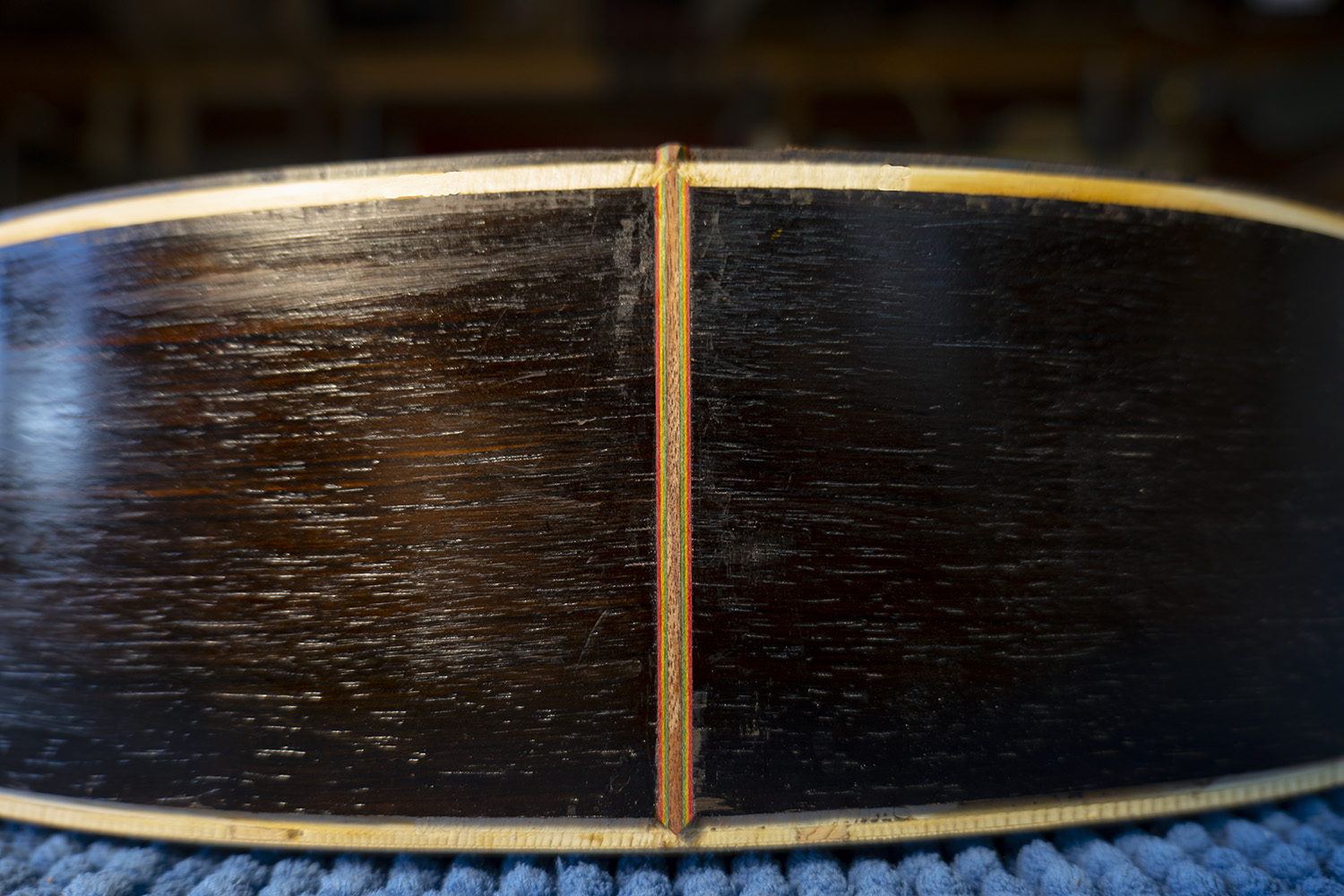
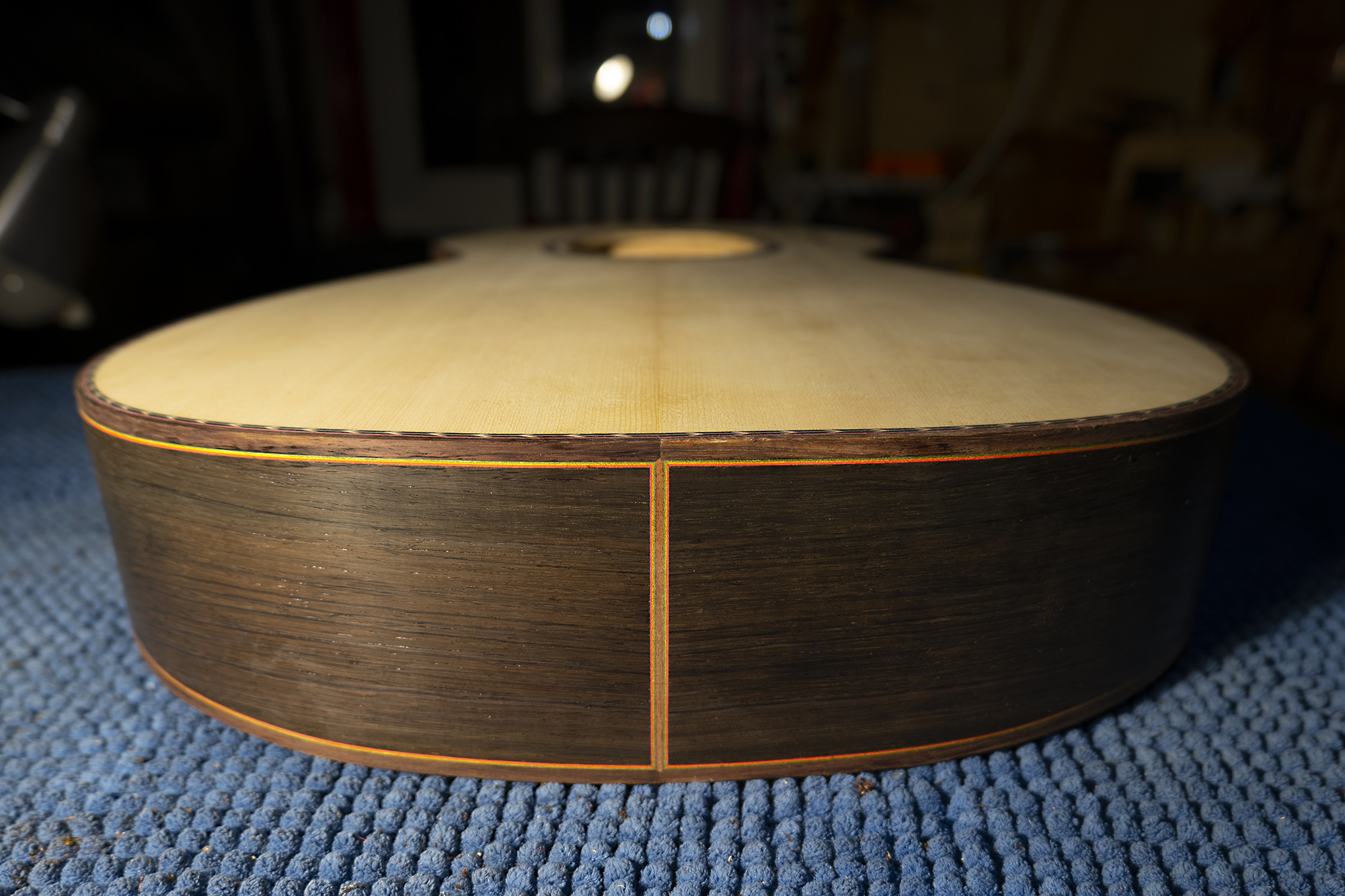

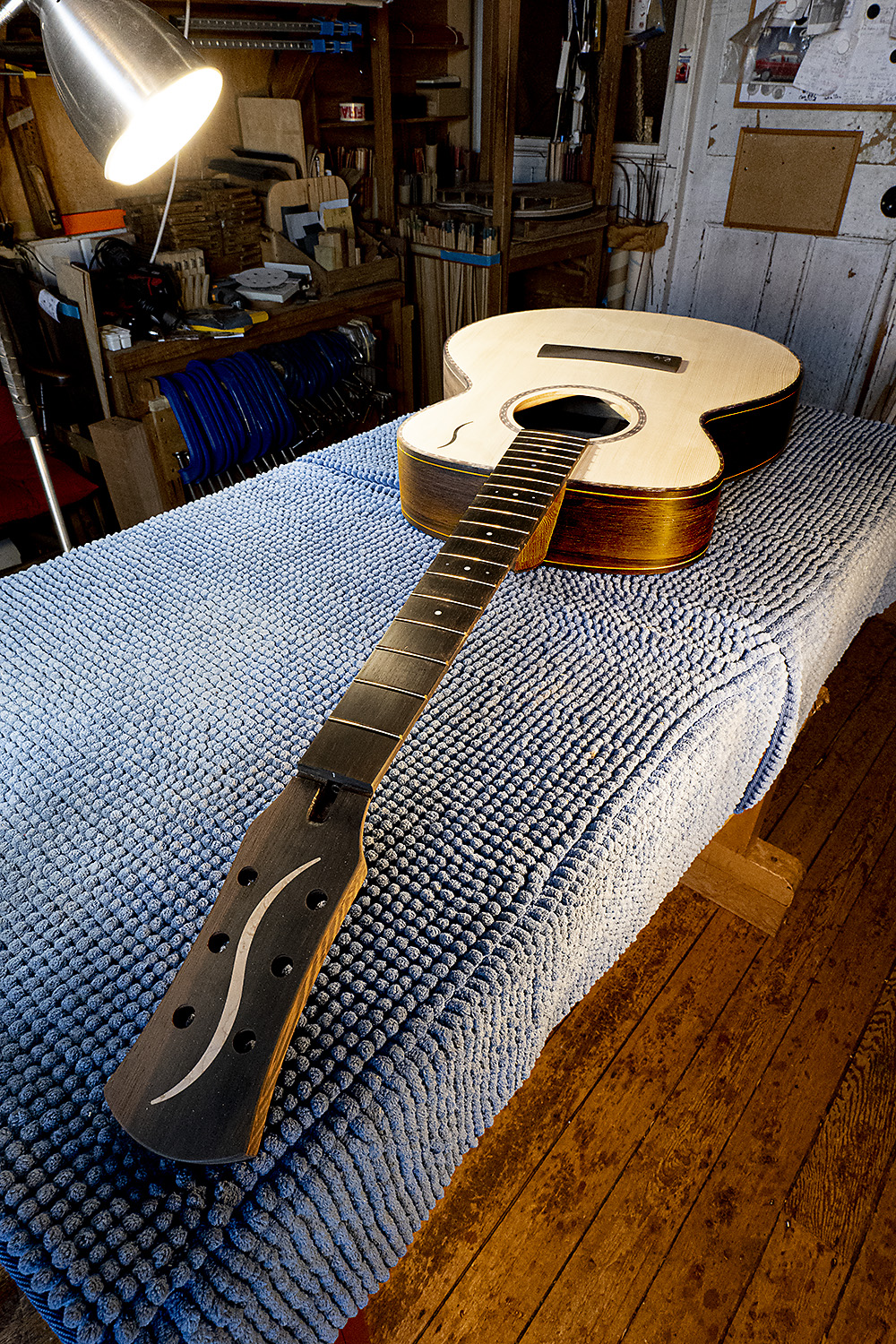
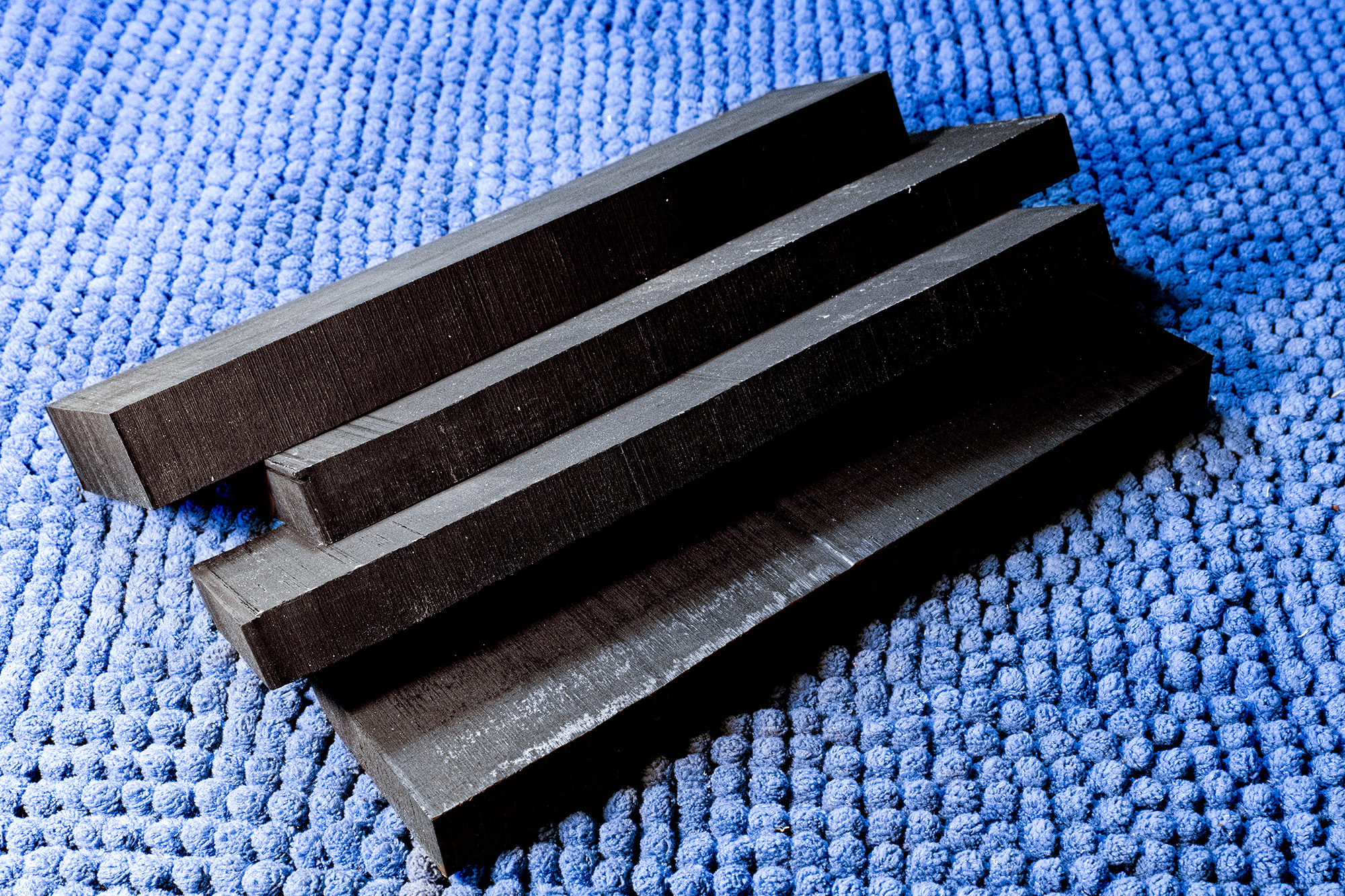 Bridge blanks cut from the Craft Supplies board
Bridge blanks cut from the Craft Supplies board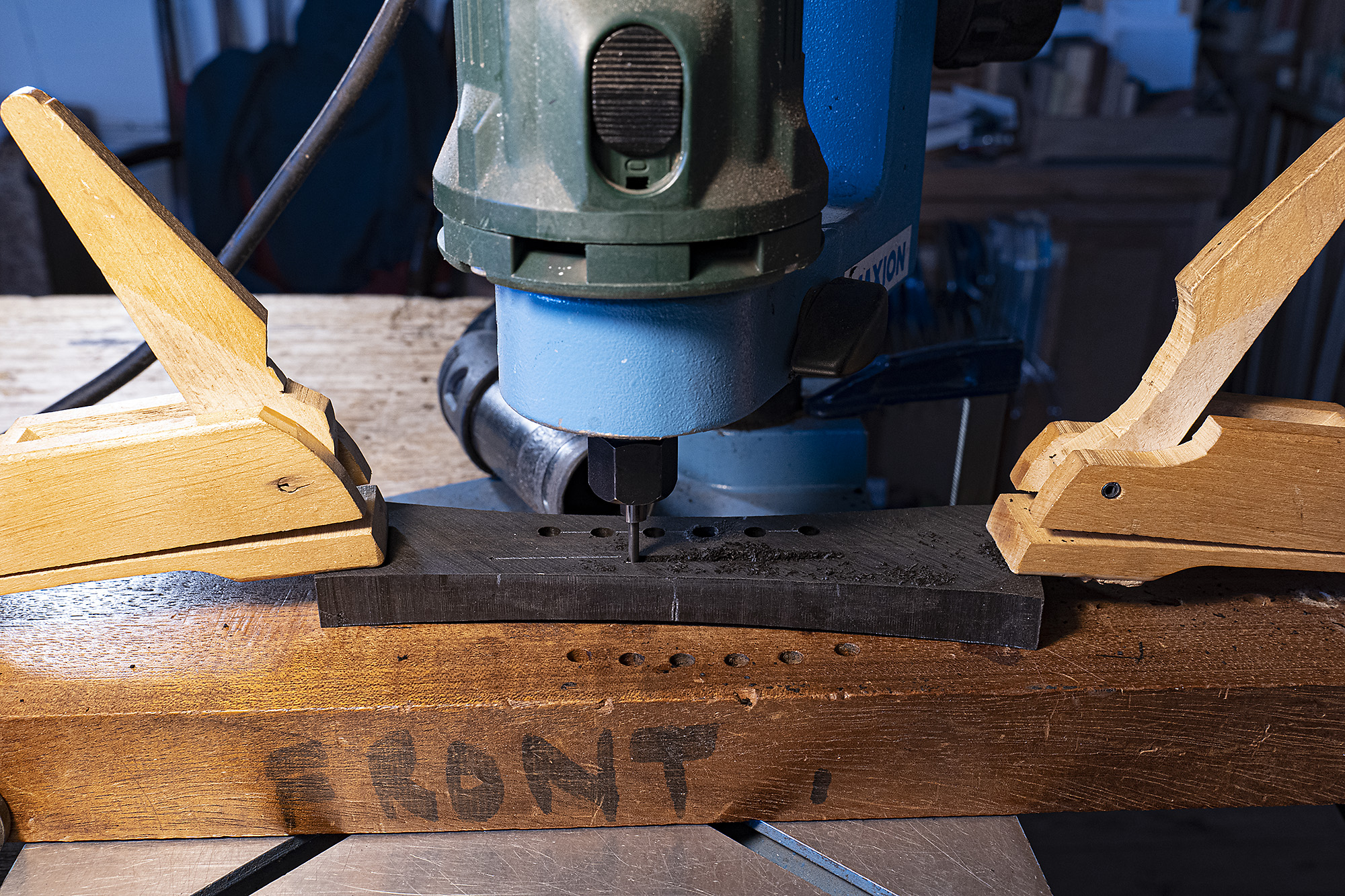
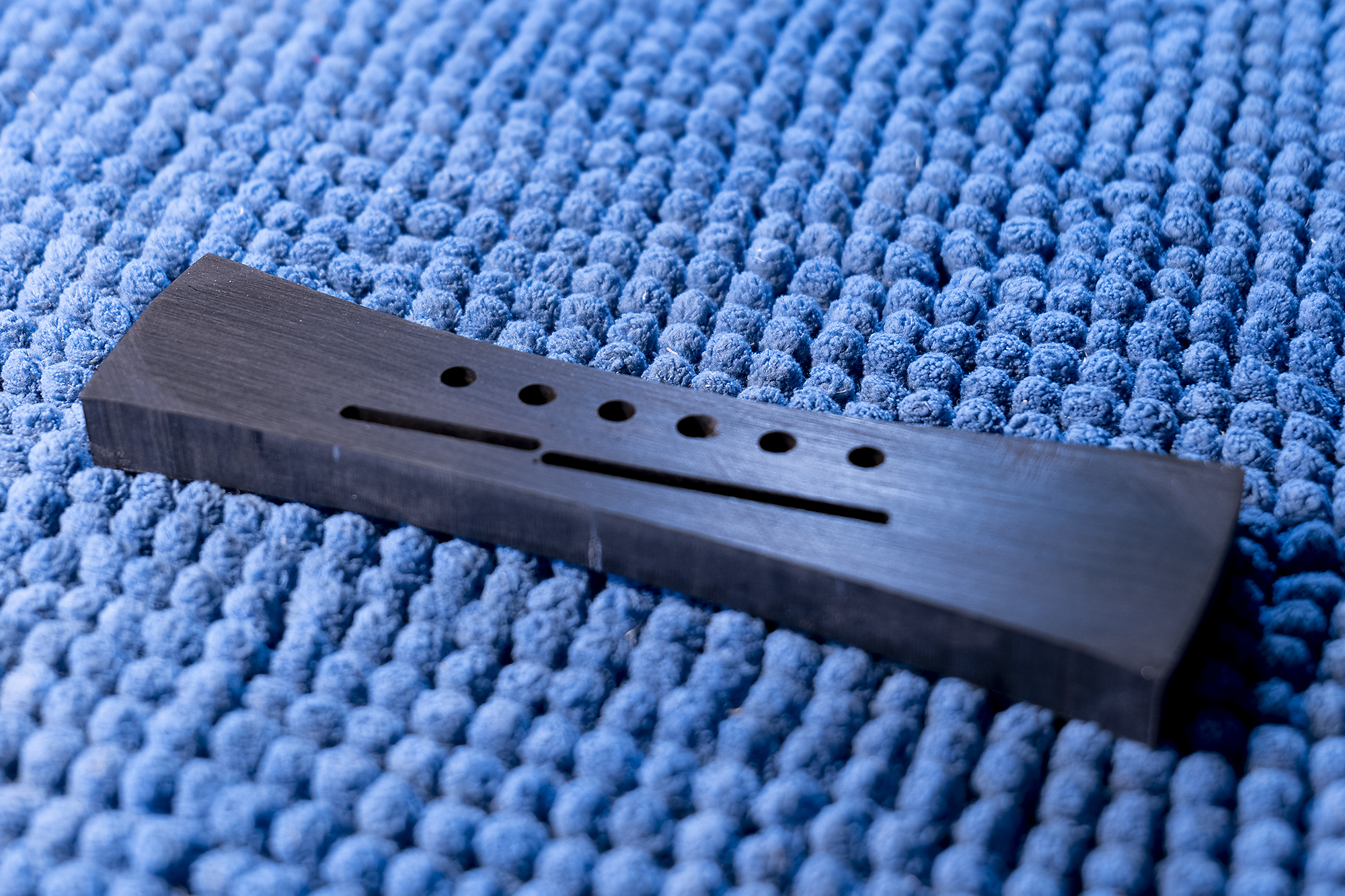 Holes drilled and saddle slots routed
Holes drilled and saddle slots routed Bridge shaped on the sander, ready for final hand trimming and sanding
Bridge shaped on the sander, ready for final hand trimming and sanding Bridge finished. Hole countersinking and final fine sanding will take place when the bridge is glued in place
Bridge finished. Hole countersinking and final fine sanding will take place when the bridge is glued in place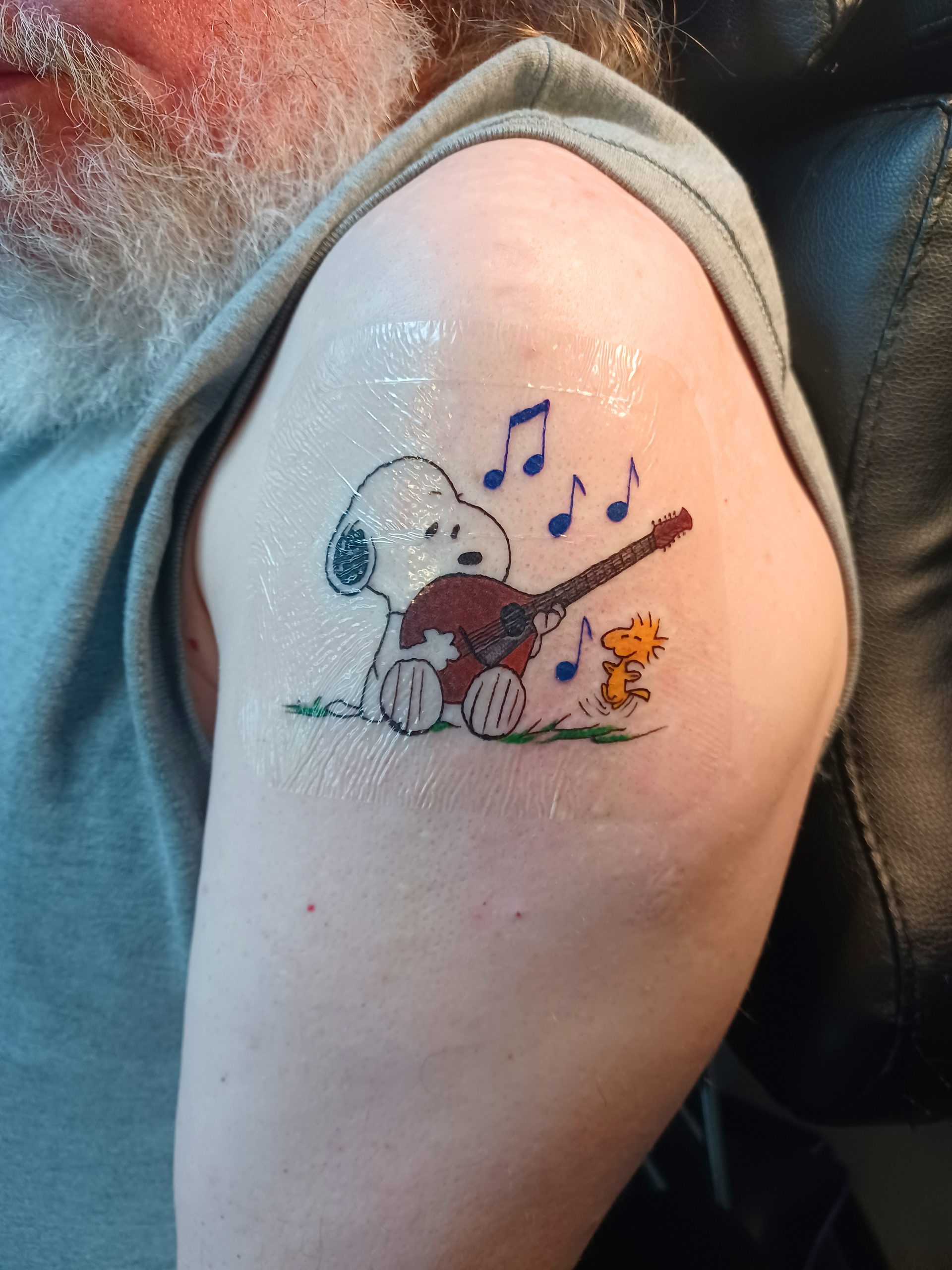
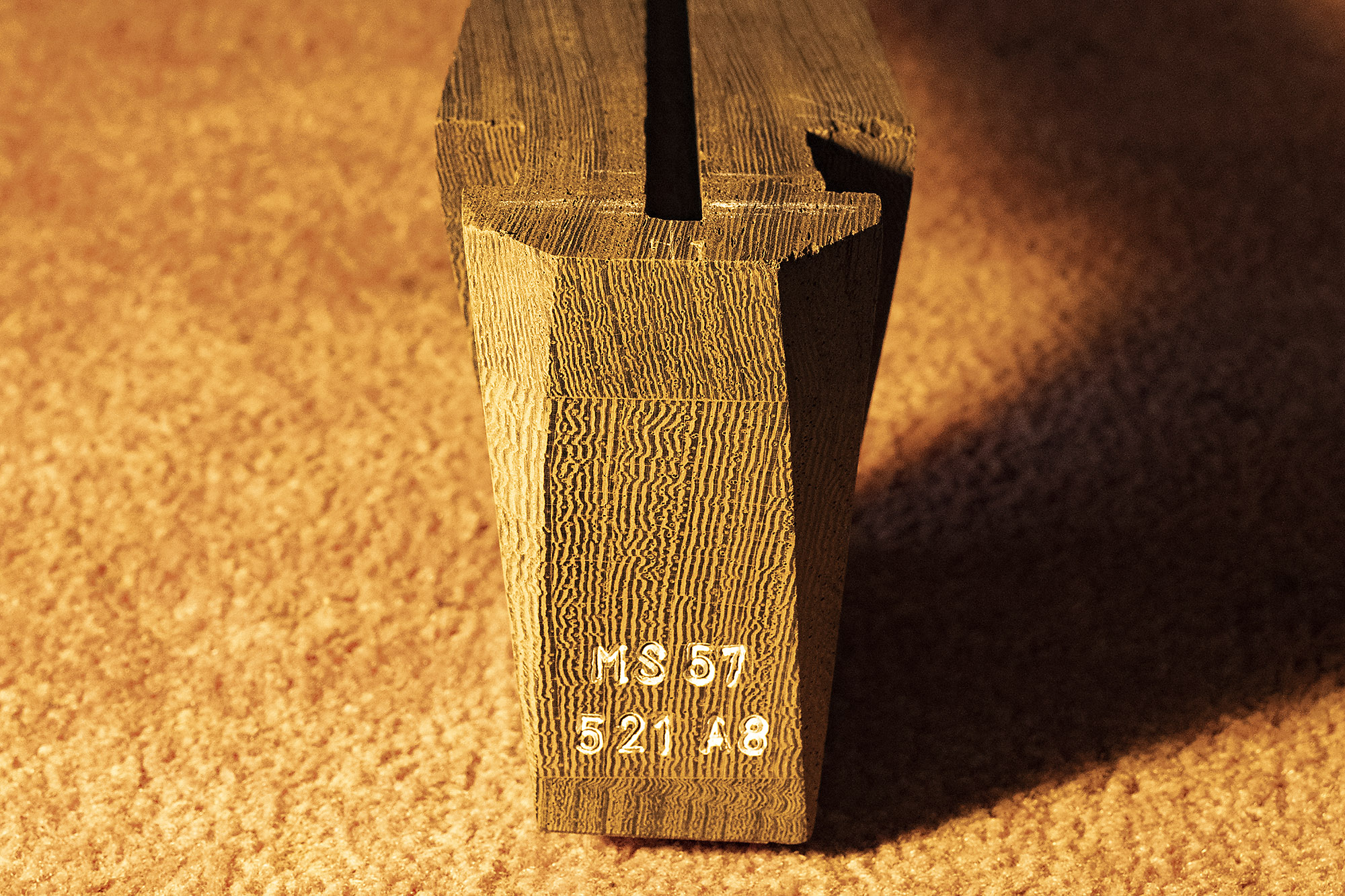 Heel block stamped 57th MS model, serial no 521, Anniversary Model 8
Heel block stamped 57th MS model, serial no 521, Anniversary Model 8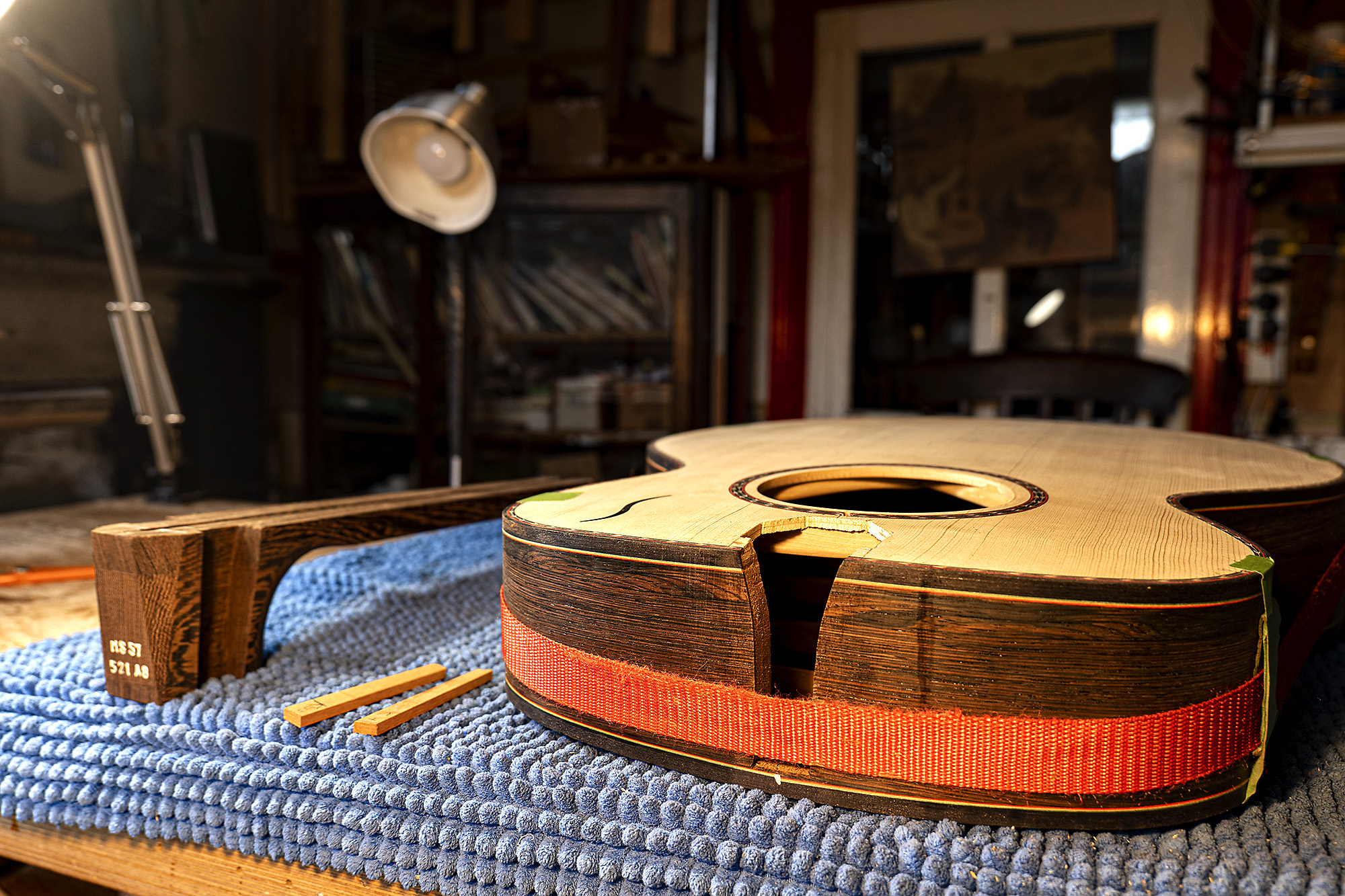 Neck, body and wedges ready for assembly
Neck, body and wedges ready for assembly Neck in place, mahogany wedges driven in and neck locked against the soundboard with little spruce wedges
Neck in place, mahogany wedges driven in and neck locked against the soundboard with little spruce wedges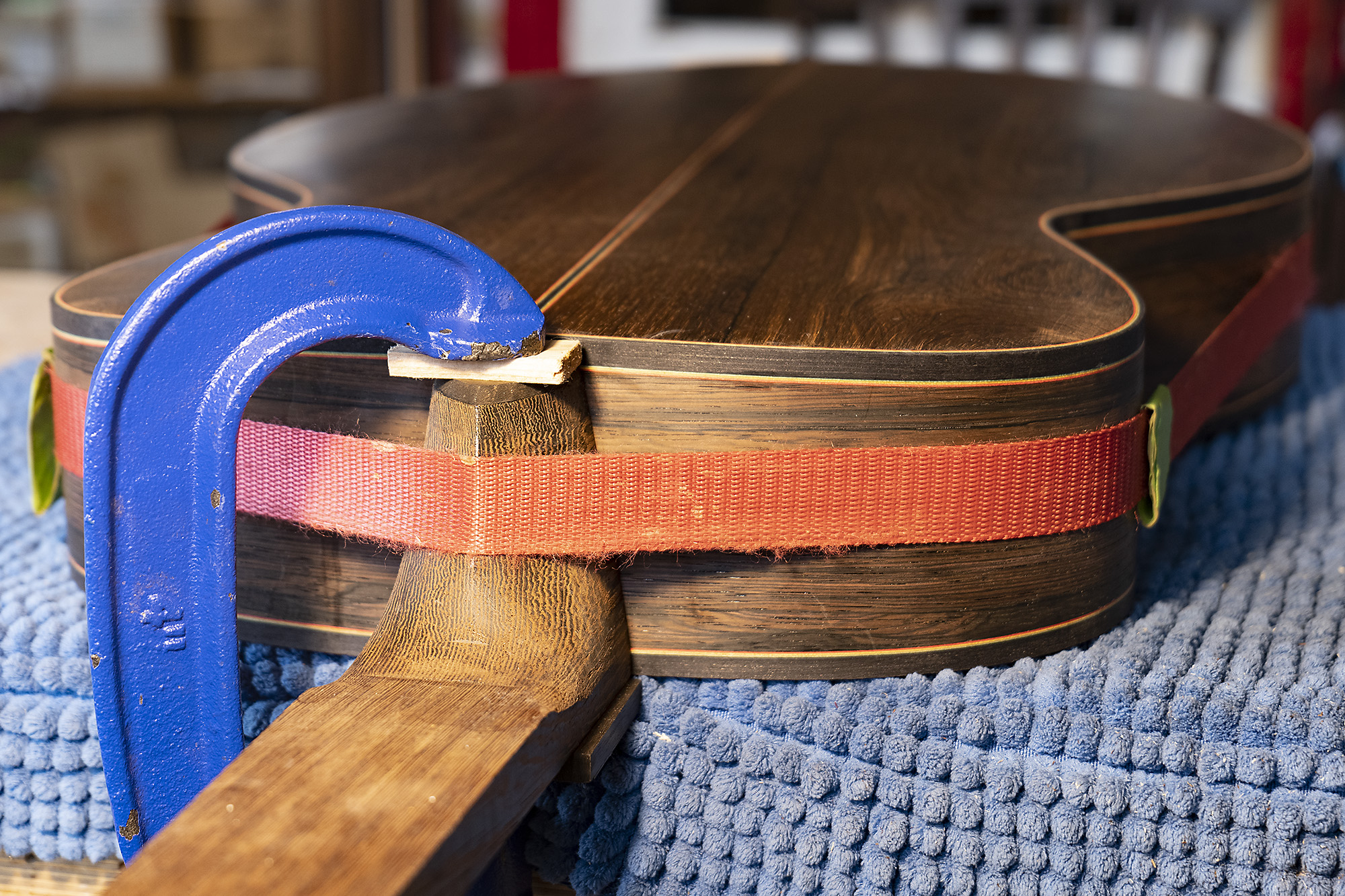 The last process: gluing on the ebony heel cap. Now it stands overnight before I begin fitting the fingerboard
The last process: gluing on the ebony heel cap. Now it stands overnight before I begin fitting the fingerboard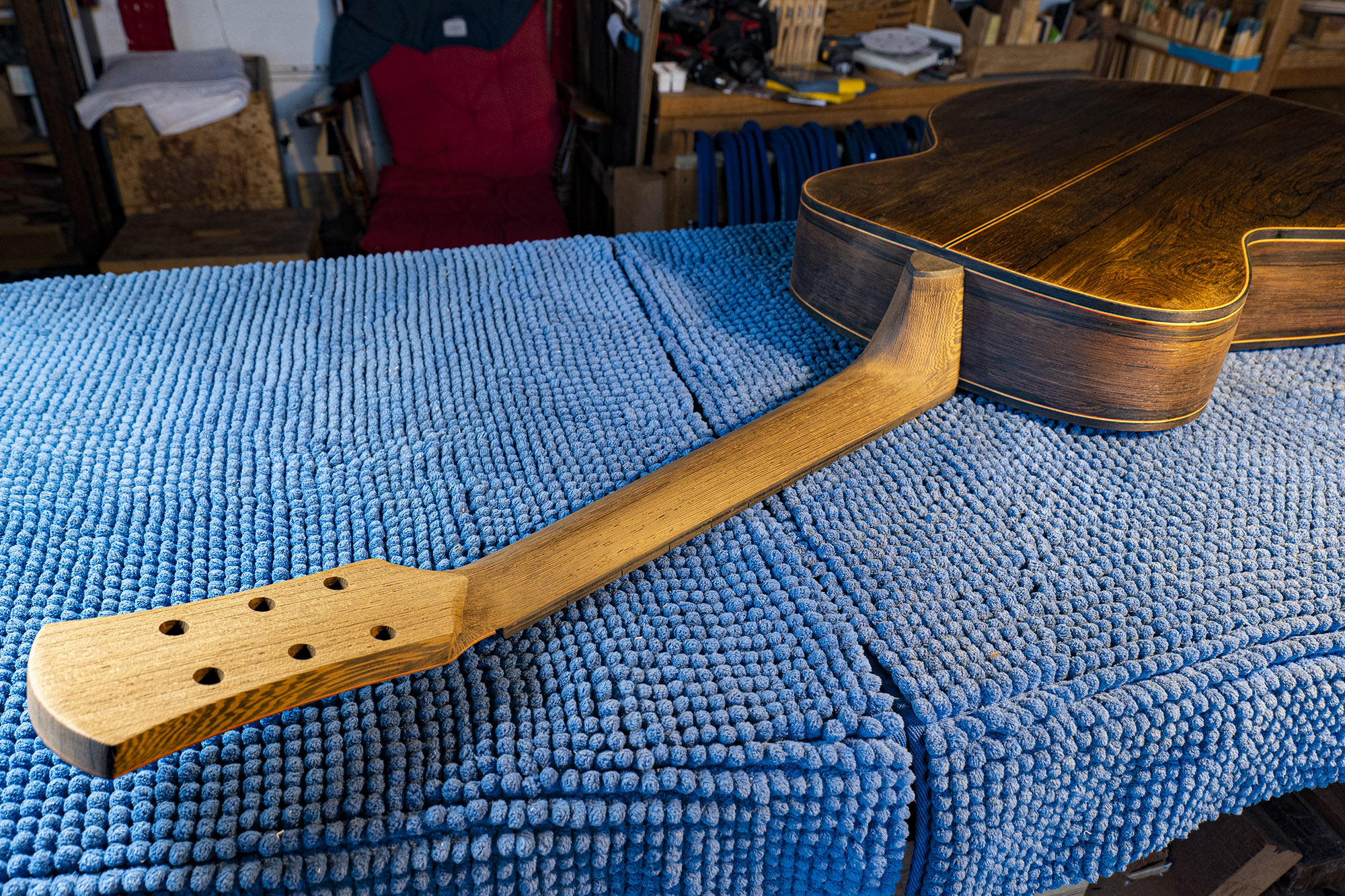 Fingerboard fitted and (some time later) Wengé neck shaped. Wengé is tricky to work. The grain runs both ways, when planing or chiseling, there is always grain against you so the blade wants to dig in. It’s abrasive, so quickly blunts tools used on it, and the dust is not good. If you get a splinter it should be taken out soon; left in, the flesh around it will fester.
Fingerboard fitted and (some time later) Wengé neck shaped. Wengé is tricky to work. The grain runs both ways, when planing or chiseling, there is always grain against you so the blade wants to dig in. It’s abrasive, so quickly blunts tools used on it, and the dust is not good. If you get a splinter it should be taken out soon; left in, the flesh around it will fester.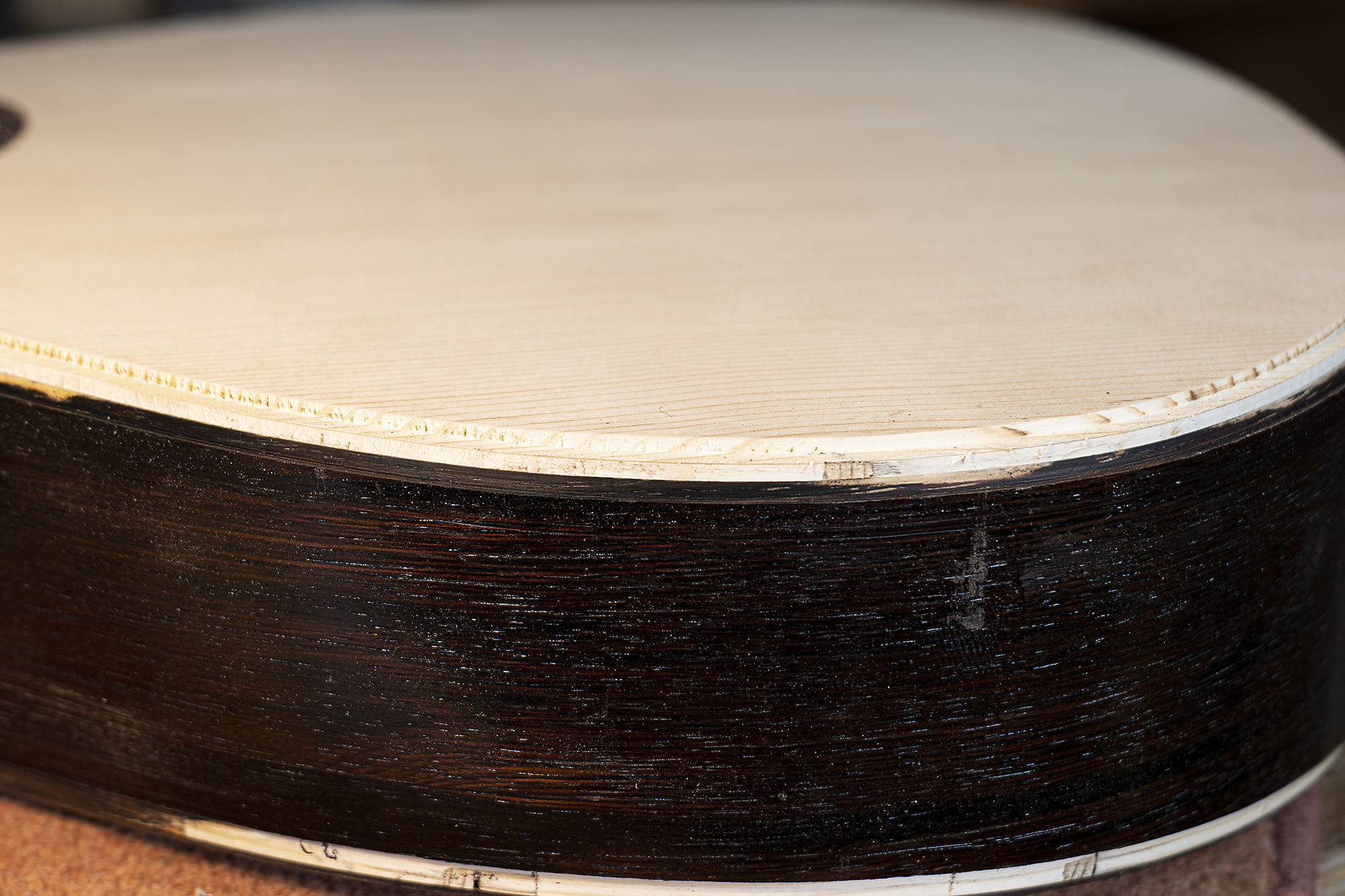 Top stepped ledge for binding and arrowhead trim plus red pinstripe
Top stepped ledge for binding and arrowhead trim plus red pinstripe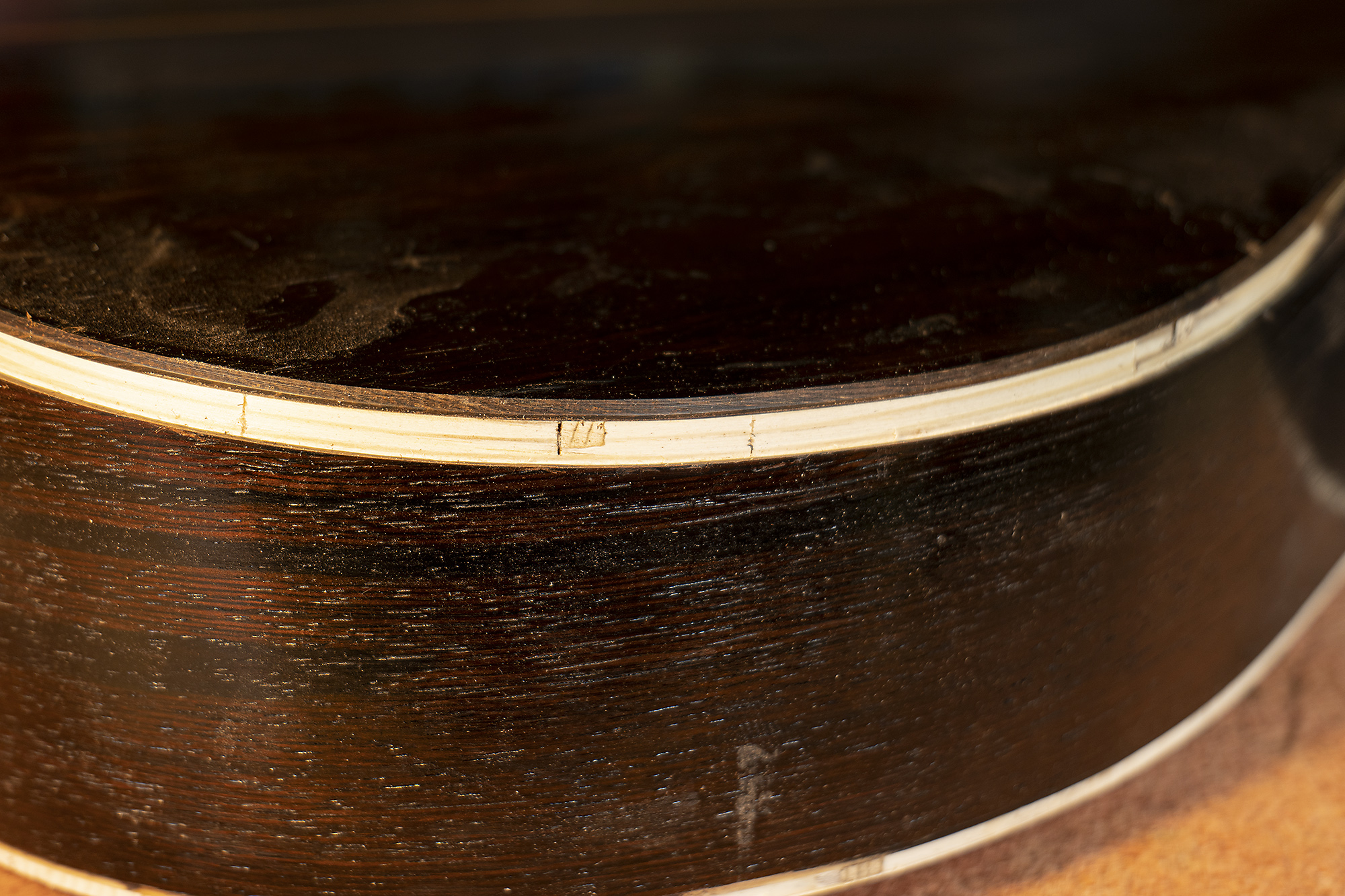 Bottom stepped ledge for binding and three colour trim
Bottom stepped ledge for binding and three colour trim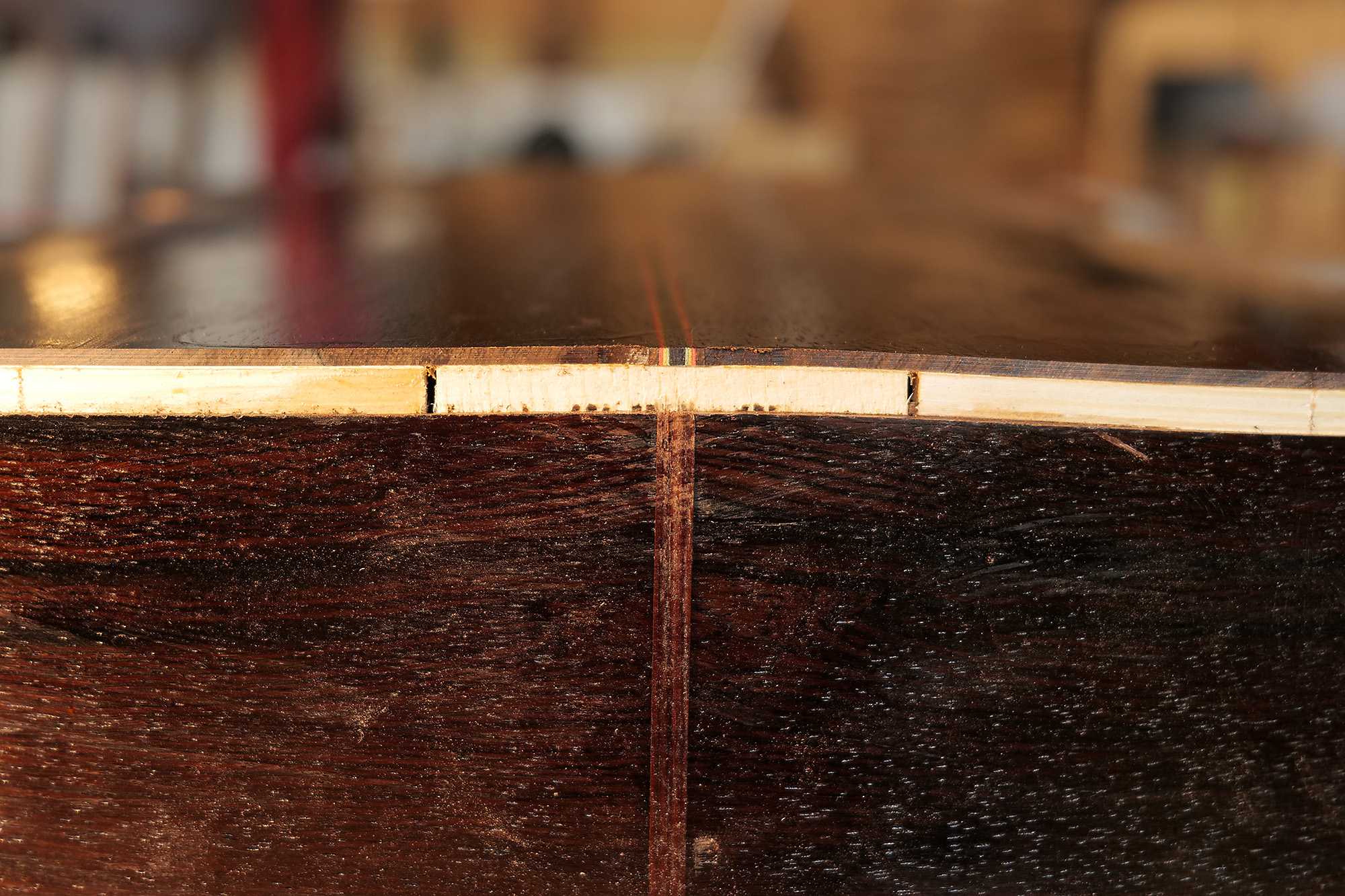 Sacrificial wood in place
Sacrificial wood in place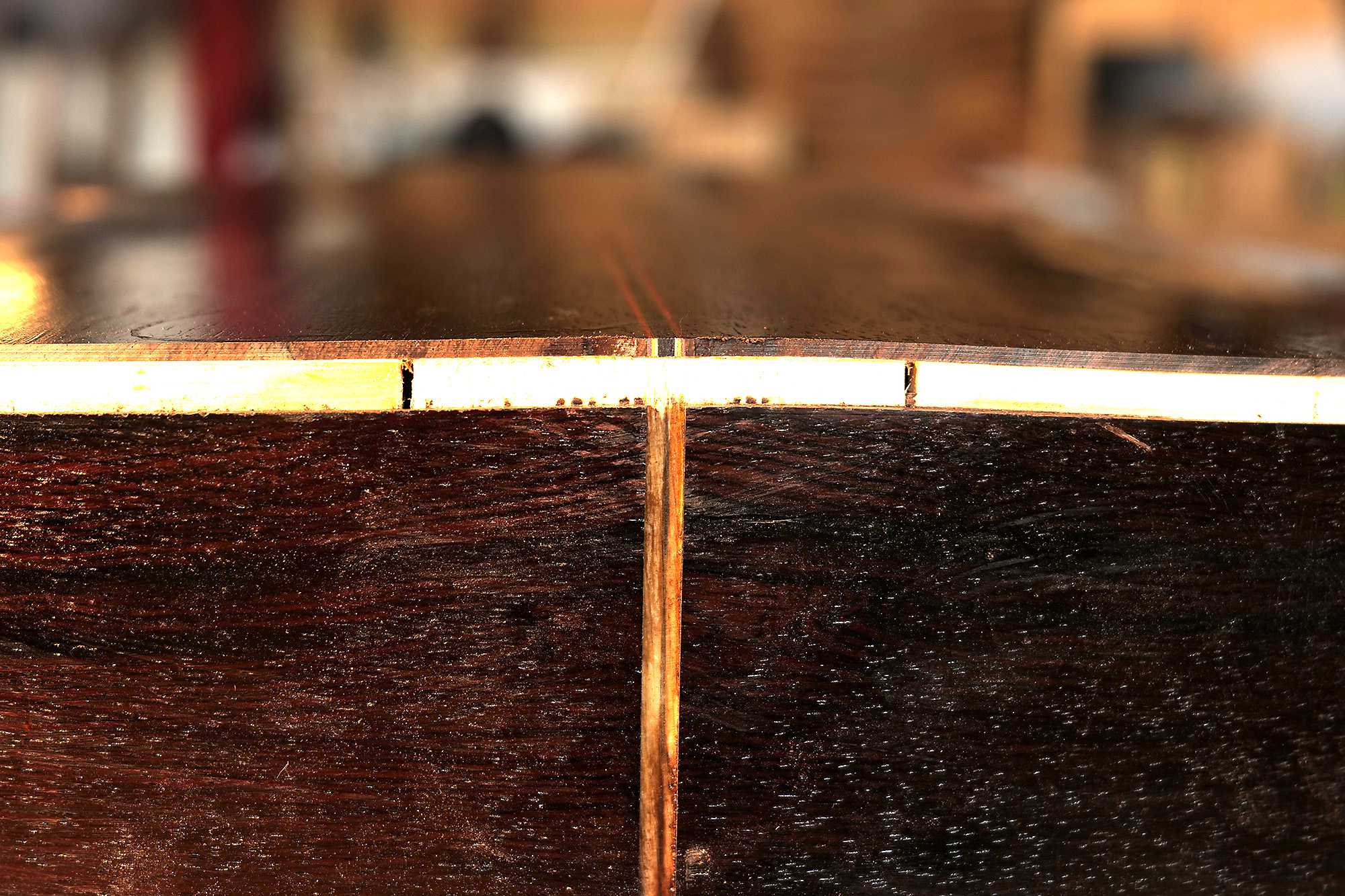 Sacrificial wood removed
Sacrificial wood removed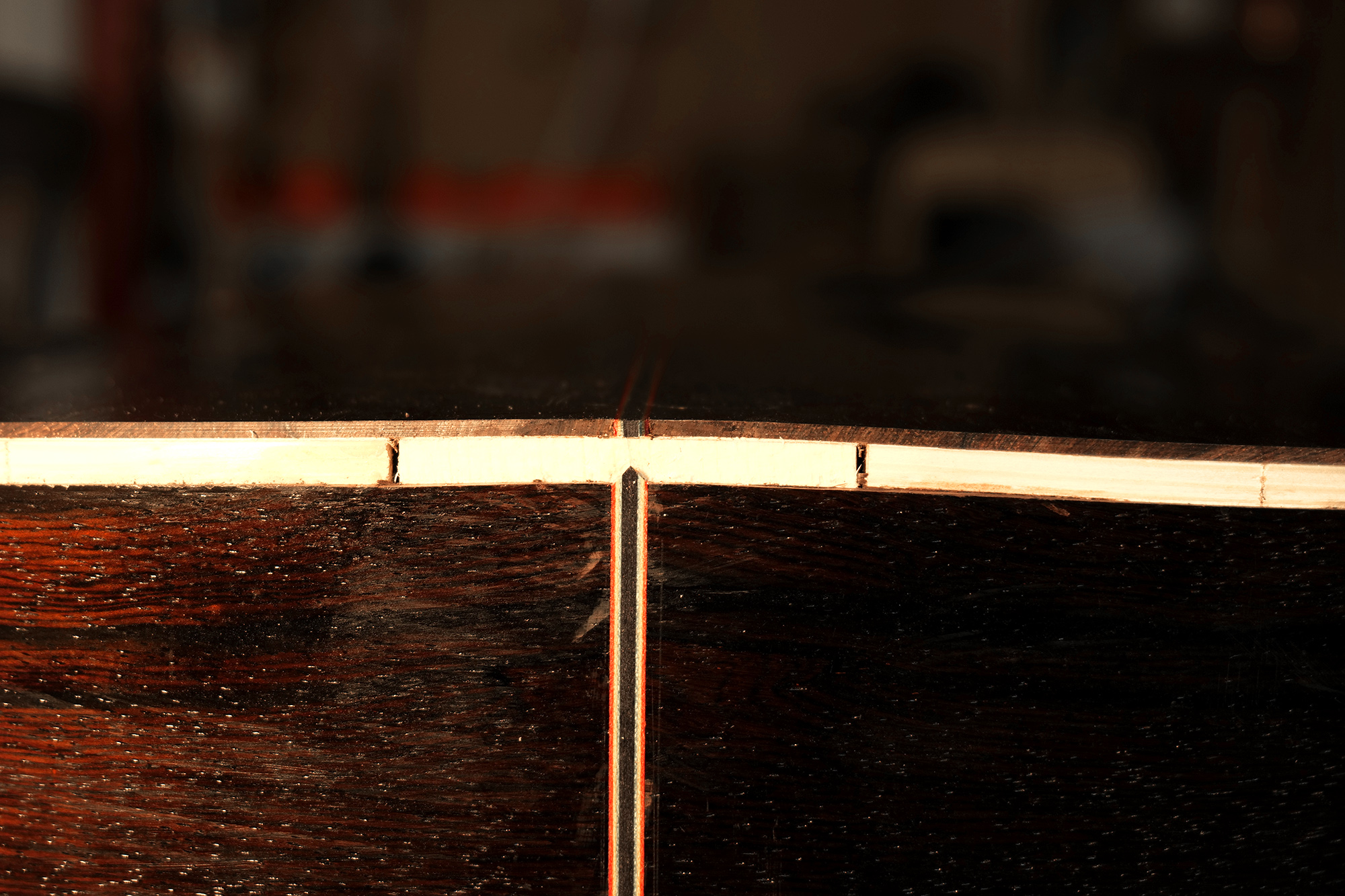 Final trim in place and mitred
Final trim in place and mitred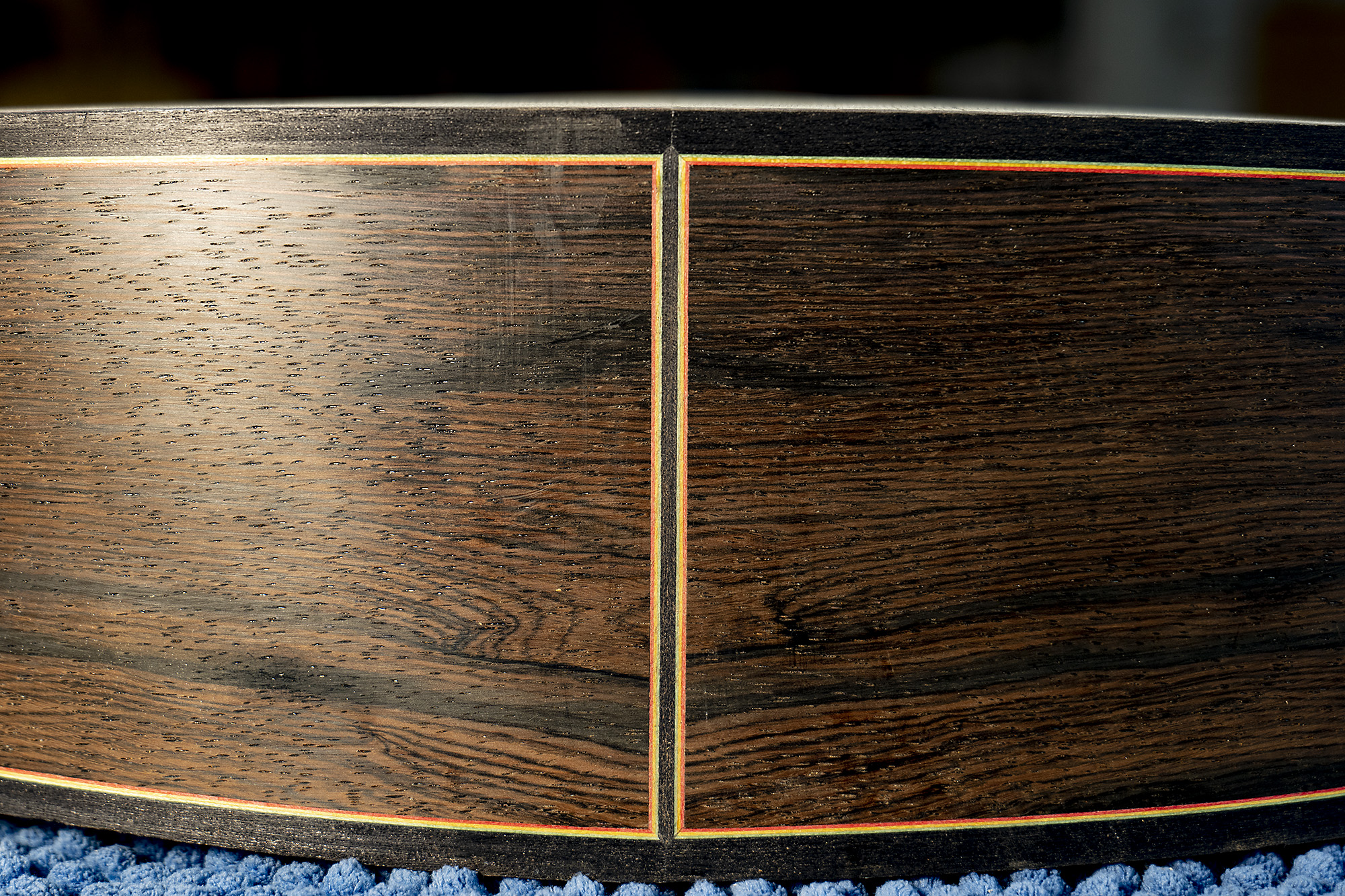 Tail trim mitred into the binding
Tail trim mitred into the binding